
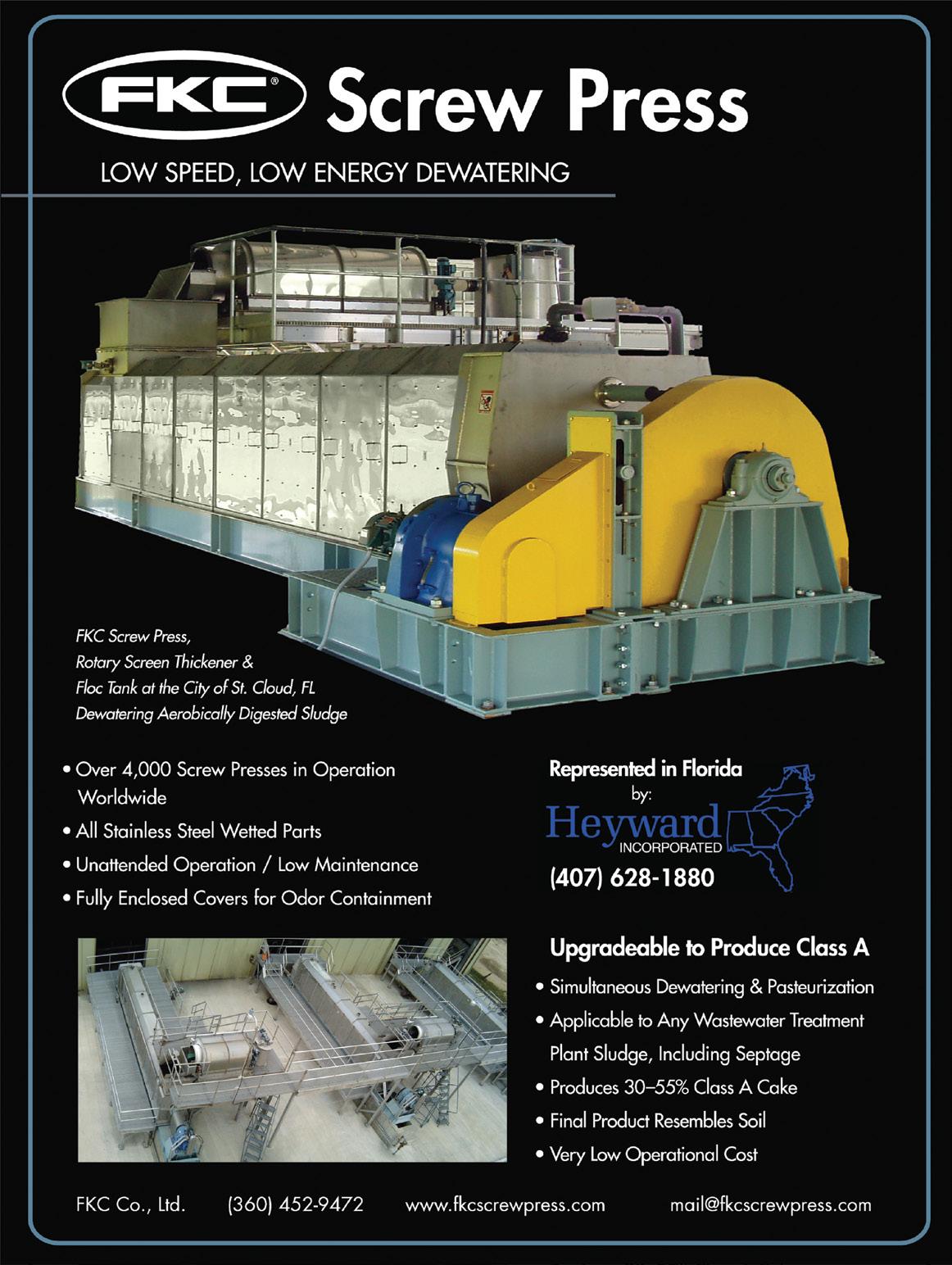
Editor’s Office and Advertiser Information: Florida Water Resources Journal 1402 Emerald Lakes Drive Clermont, FL 34711
Phone: 352-241-6006
Email: Editorial, editor@fwrj.com
Display and Classified Advertising, ads@fwrj.com
Business Office: 1402 Emerald Lakes Drive, Clermont, FL 34711 Web: http://www.fwrj.com
General Manager: Michael Delaney
Editor: Rick Harmon
Graphic Design Manager: Patrick Delaney
Mailing Coordinator: Buena Vista Publishing Published by

BUENA VISTA PUBLISHING for Florida Water Resources Journal, Inc.
President: Richard Anderson (FSAWWA) Peace River/Manasota Regional Water Supply Authority
Vice President: Joe Paterniti (FWEA) Clay County Utility Authority
Treasurer: Rim Bishop (FWPCOA) Seacoast Utility Authority
Secretary: Mish Clark Mish Agency
Moving?
The Post Office will not forward your magazine. Do not count on getting the Journal unless you notify us directly of address changes by the 15th of the month preceding the month of issue. Please do not telephone address changes. Email changes to changes@fwrj.com or mail to Florida Water Resources Journal, 1402 Emerald Lakes Drive, Clermont, FL 34711
Membership Questions
FSAWWA: Casey Cumiskey – 407-979-4806 or fsawwa.casey@gmail.com
FWEA: Karen Wallace, Executive Manager – 407-574-3318
FWPCOA: Darin Bishop – 561-840-0340
Training Questions
FSAWWA: Donna Metherall – 407-979-4805 or fsawwa.donna@gmail.com
FWPCOA: Shirley Reaves – 321-383-9690
For Other Information
DEP Operator Certification: Ron McCulley – 850-245-7500
FSAWWA: Peggy Guingona – 407-979-4820
Florida Water Resources Conference: 407-363-7751
FWPCOA Operators Helping Operators: John Lang – 772-559-0722, e-mail – oho@fwpcoa.org
FWEA: Karen Wallace, Executive Manager – 407-574-3318
Websites
Florida Water Resources Journal: www.fwrj.com
FWPCOA: www.fwpcoa.org
FSAWWA: www.fsawwa.org
FWEA: www.fwea.org and www.fweauc.org
Florida Water Resources Conference: www.fwrc.org
Throughout this issue trademark names are used. Rather than place a trademark symbol in every occurrence of a trademarked name, we state we are using the names only in an editorial fashion, and to the benefit of the trademark owner, with no intention of infringement of the trademark. None of the material in this publication necessarily reflects the opinions of the sponsoring organizations. All correspondence received is the property of the Florida Water Resources Journal and is subject to editing. Names are withheld in published letters only for extraordinary reasons. Authors agree to indemnify, defend and hold harmless the Florida Water Resources Journal Inc. (FWRJ), its officers, affiliates, directors, advisors, members, representatives, and agents from any and all losses, expenses, third-party claims, liability, damages and costs (including, but not limited to, attorneys’ fees) arising from authors’ infringement of any intellectual property, copyright or trademark, or other right of any person, as applicable under the laws of the State of Florida.
2023 Florida Water Resources Conference Awards
18 Awards were presented by FWEA, FSAWWA, and FWPCOA at the conference held May 31- June 3.
ON THE COVER: A little blue heron, which is all white as it’s under a year old. These birds nest and forage in many kinds of wetlands, including swamps, marshes, ponds, streams, lagoons, tidal flats, canals, ditches, fish hatcheries, and flooded fields. Responsible water resources management will keep their habitats safe. (photo: Randy Brown)
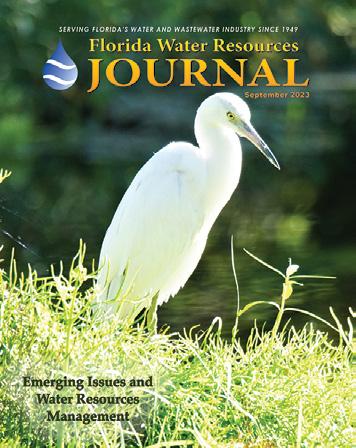
Florida Water Resources Journal, USPS 069-770, ISSN 0896-1794, is published monthly by Florida Water Resources Journal, Inc., 1402 Emerald Lakes Drive, Clermont, FL 34711, on behalf of the Florida Water & Pollution Control Operator’s Association, Inc.; Florida Section, American Water Works Association; and the Florida Water Environment Association. Members of all three associations receive the publication as a service of their association; $6 of membership dues support the Journal. Subscriptions are otherwise available within the U.S. for $24 per year. Periodicals postage paid at Clermont, FL and additional offices. POSTMASTER: Send address changes to Florida Water Resources Journal, 1402 Emerald Lakes Drive, Clermont, FL 34711 News and Features 4 AWWA Water 2050 Update 32 Training the New Generation of Advanced Water Treatment Operators—Steve Soltau 40 Contractors Roundup: 2023 Florida Water Resources Conference Panel Recap: How to Increase Qualified Proposers—Amanda Guillory 58 News Beat
Articles 8 Florida’s Water Resources: A Primer—Tatiana Borisova and Tara Wade 24 SCADA Cybersecurity in Today’s World—Mike Stoup and Robert (RJ) Burney 48 St. Augustine’s Lift Stations Rise Above Stormy Seas—Taylor Bomarito and Stephen Slaughter Education
39 Florida Water Resources Conference 44 FSAWWA Fall Conference General Information 45 FSAWWA Fall Conference Registration 46 FSAWWA Fall Conference Poker Night, Happy Hour, and Golf 47 FSAWWA Fall Conference Students and Young Professionals Activities 49 FWPCOA Training Calendar 59 CEU Challenge Columns 16 FSAWWA Speaking Out—Greg D. Taylor 28 FWEA Focus—Suzanne Mechler 30 Reader Profile—Richard J. Gallant 41 Test Yourself—Charles Lee Martin Jr. 42 Let’s Talk Safety: Be Prepared for an Emergency 56 C Factor—Patrick “Murf” Murphy Departments 60 Classifieds 62 Display Advertiser Index
Technical
and Training
Florida Water Resources Journal • September 2023 3 Volume 74 September 2023 Number 9
AWWA Water 2050 Update

Water 2050TM is a collaborative multi-year initiative led by the American Water Works Association (AWWA) to envision the future of water and chart a course for success and sustainability.

In an effort to bring together diverse voices to explore the water community’s long-term challenges and opportunities, AWWA has hosted a series of think tanks with influential thinkers from within and outside the water sector to examine water’s future through the prism of five core drivers:
S Sustainability
S Technology
S Economics
S Governance
S Social/Demographics
Five Core Drivers Explained
The five core drivers as identified by AWWA and water industry leaders are:
Sustainability
Managing the planet’s limited water resources and built infrastructure for water is paramount. Climate change is among the biggest risks. It will bring conditions that are more fierce and less predictable: extended droughts and heatwaves, increased hurricanes and wildfires, and severe winter storms. The future will require skillful and creative stewardship of water, the most vital natural resource, as well as innovative approaches to keep water infrastructure strong and resilient.
Technology
As the world enters the fourth industrial revolution, water professionals have access to new technologies that are changing
the way they interact with water resources, water systems, and the people they serve. Advances in data, analytics, the Internet of Things (IoT), machine learning, and artificial intelligence will increasingly empower consumers and influence water system operations. Adoption of new technologies will solve complex problems and sometimes introduce unintended challenges.
Economics
Water is a critical economic engine for North American communities and across the globe. Increasingly, the water community
is asked to do more with less, while also addressing rising infrastructure needs. Consideration must be given to important economic factors such as regionalization; supply chain resilience; decentralized treatment; environmental, social, and governance (ESG) approaches to assessing risks and value; and the benefits of a circular economy. Rate setting will occur in a world more-keenly aware of equity and affordability challenges.
Governance
The roles of federal, provincial, state, and local governments significantly impact how water
utilities are operated and regulated. Both economics and governance will shape the model of tomorrow’s water utilities. Some communities may turn to regional solutions to gain efficiencies. As regulatory structures evolve, communities will have to evaluate new approaches, such as fit-for-purpose standards and decentralized treatment.
Social/Demographics
Public interest and concern about water quality and equity is rising, which means all communities must work to strengthen public trust. Simultaneously, potential population shifts between urban and rural areas are creating resource and infrastructure challenges, while also forcing community-driven water solutions. Population growth in water-stressed communities will require innovative thinking to manage limited supplies.
Recommendations flowing from each facilitated think tank will serve as a call to action for AWWA, its sections, and the wider water community.
Ultimately, Water 2050’s influence will extend beyond the water community, fostering partnerships and cross-sector collaboration for mutual and global benefit.
Goals of Water 2050
From its start in 2022 and working through the end of 2023, Water 2050 participants will do the following:
Engage in Meaningful Conversations
Thought leaders from within and outside the water sector
Continued on page 6
4 September 2023 • Florida Water Resources Journal

examine the future of water through the prism of the five core drivers.
Enlist Strategic Partners
Collaboration among water utilities, service providers, academia, water-sector organizations, and nontraditional partners will be essential. The initiative will also reach beyond the water sector to engage corporate water users, nonprofit organizations, and other stakeholder groups for fresh insights.
Foster Intergenerational Responsibility
Today’s and tomorrow’s water professionals and leaders must work together to create a successful future. The voices of young and emerging professionals will be key throughout the initiative.
Capture Collective Knowledge
A report on insights from each think tank will be published to support the water community in realizing the Water 2050 vision. All of this will support the critical mission of the water community: safe water, healthy people, and a sustainable planet.
Think Tank Meetings and Outcomes
Participants in all of the think tanks engaged in facilitated smalland large-group conversations, private reflection, and panel discussions to imagine the future of water and develop a set of recommended actions.
Water 2050 Sustainability Think Tank
The first of the think tanks convened in September 2022, and focused on sustainability. The group included highly respected voices from the water and wastewater utility and consulting communities, academia, regulatory agencies, and the beverage industry, as well as those with interests in agriculture, climate science, environmental advocacy, and innovation incubators, among others.
Recommended Actions
Participants emerged with 10 recommended actions encompassing four broad categories:
S Implement a new water utility paradigm
S Establish a climate resilient water future
S Define the value of water for a new reality
S Achieve circularity of water
Water 2050 Technology Think Tank
The second think tank was held in December 2022 and focused on technology. Participants included representatives from water and wastewater utilities, manufacturing and consulting communities, innovation incubators, Silicon Valley thought leaders, privacy and cybersecurity experts, regultors and academics, chief executive officers, and an agriculture research hydrologist.
Recommended Actions
The group developed recommended actions in four broad categories:
S Accelerate innovation
S Transform water services through next-generation technology
S Apply technology as the “great water equalizer”
S Achieve a secure cyber future
Water 2050 Economics Think Tank
A mixed group of influential thinkers from within and outside the water community put forth nine recommendations for an economically sustainable water future in the third think tank report of the Water 2050 initiative.
The 26 participants in this think tank, which took place Jan. 23-25, 2023, at the Penn Club in New York City, included leaders from water and wastewater utilities, manufacturers, and consultants, as well as regulators and academics, chief executive officers, climate advocates, and infrastructure and financial services experts.
Recommended Actions
The group developed recommended actions in three broad categories:
S Reimagine the water economy
S Embrace innovative economic models
S Mobilize the water community
Water 2050 Governance Think Tank
A diverse group of leaders from within and outside the water community developed nine recommendations for the future of water governance—including principles, frameworks, and approaches—to ensure a successful and sustainable water future in the fourth think tank report of the Water 2050 initiative.
The 27 participants in this think tank, which took place Feb. 27-Mar. 1, 2023, at the Reservoir Center for Water Solutions in Washington, D.C., included experts from the water and wastewater utility community, regulatory agencies, international development agencies, manufacturing and consulting firms, advocates, academics, and chief executive officers.
Recommended Actions
The group developed recommended actions in four broad categories:
S Implement a “One Water” governance approach
S Optimize utility governance and business models
S Develop governance that promotes innovation and sustainability
S Advance collaboration to drive (governance) innovation
Water 2050 Social/Demographics Think Tank
A group of influential experts from within and beyond the water community developed nine proactive recommendations considering key social and demographic shifts and their impact on the future of water in the fifth think tank report of the Water 2050 initiative.
The 27 participants in this think tank, which took place April 26-28, 2023, at the
Birmingham Civil Rights Institute in Birmingham, Ala., included members from the water and wastewater utility community, international development agencies, academics, demographers, cultural anthropologists, consulting and manufacturing firms, and chief executive officers.
Recommended Actions
The group developed recommended actions in three broad categories:
S Community-centric water management approach
S Sustainable services through collaboration
S Innovative solutions for equitable water
While the recommended actions from all of the groups are bold, participants acknowledged that they are a starting point. They are a promising foundation from which to chisel more-detailed actions through future think tanks and other contributions to the Water 2050 initiative.
Advisory Team Guidance
A select advisory team is guiding the Water 2050 event design and providing guidance. The team includes:
S Andy Richardson, chair emeritus at Greeley and Hansen and AWWA past president
S Sue McCormick, former Great Lakes Water Authority chief executive officer
S Jennifer Sara, global director for the World Bank’s Water Global Practice
“Water 2050 will significantly influence how AWWA builds member value and engages the water community in the years ahead,” said David LaFrance, AWWA chief executive officer. “It will also be a foundation for collaboration with new and existing partners who will help us understand the challenges we face.”
Get the reports summarizing the work of the Water 2050 think tanks at www.awwa.org. S
6 September 2023 • Florida Water Resources Journal
Continued from page 4
We have more than 60 years of experience in oxidation ditch technology and more than 2000 installations. Lakeside’s CLR process offers a variety of wastewater treatment options, including several operational modes, nitrogen and phosphorus removal, and an adaptable configuration, providing maximum flexibility with consistently high quality effluent. The CLR process is simple to operate and can be configured in several shapes, including the conventional racetrack, folded U-shape or concentric multichannel designs. Lakeside’s staff delivers full service from initial concept through construction to plant operation. The result: reliable results with minimal operator attention and maintenance. When performance counts, count on the industry leader for more than 90 years!




Cleaner Water for a Brighter Future®


CLR Process Components
Magna Rotors
Velocity Control Baffles
Rotor Covers

Level Control Weirs
E.A. Aerotor
Process Monitoring and Control Systems
FLEXIBILITY IS ONLY ONE ADVANTAGE OF OUR CLOSED LOOP REACTOR PROCESS.
Speak to one of our experts at 630.837.5640, email us at sales@lakeside-equipment.com, or visit www.lakeside-equipment.com for more product information. REPRESENTED LOCALLY BY: Florida Panhandle Only T: 205.424.7570 www.eshelmancompany.com Trippensee Shaw, Inc. Eustis and Sebring, FL www.TrippenseeShaw.com T: 407.222.0575 Visit us at BOOTH #1631 October 2-4, 2023 Chicago, IL Cleaner Water for a Brighter Future ® is a registered trademarks owned by Lakeside Equipment Corporation. All other trademarks are property of their respective owners. © 2023 Lakeside Equipment Corporation.
Florida’s Water Resources: A Primer
Why Water Resources Are Important
“Water is the lifeblood of our bodies, our economy, our nation and our well-being.”
–Stephen Lee Johnson, head of the U.S. Environmental Protection Agency under the George W. Bush Administration
This quote sums up the importance of water resources. Water is used for drinking, gardening, and other household uses; in agriculture (e.g., for irrigation); and in energy production and industrial processes (e.g., for cooling in thermoelectric power generation). Clean and plentiful water resources are also important for recreational activities, such as boating, swimming, and fishing.
Water also sustains wildlife (such as manatees) and is an integral part of Florida’s environment (Figure 1). As of November 2021, record-breaking manatee deaths—over 1,000 deaths within 11 months—highlight the importance of clean waterways for wildlife’s survival (Chesnes, 2021; Florida Fish and Wildlife Conservation Commission [FFWCC] 2021).

The use of water in Florida is increasing, along with the state’s population. Florida relies on underground freshwater reserves, called aquifers, to supply its diverse water needs (U.S. Geological Survey [USGS], 2016a). In some Florida regions, this underground freshwater reserve can no longer sustain the growing water demands of the population while also feeding Florida’s rivers, springs, and lakes. With periodic droughts, shortages of freshwater may occur. Drought and water shortages in the state have caused urban planners and policy makers to pay closer attention to water use, water supply development, and water resource management. Florida public opinion surveys show that the majority of Floridians rate water as an issue of top importance for the state (UF/IFAS Center for Public Issues Education, 2016).
A better understanding of Florida’s water resources is a first step toward optimizing current freshwater supply use and ensuring adequate water resources in the future.
Hydrologic Cycle: Where Water Originates and Where It Goes
Toni Morrison, an American novelist, once said that “all water has a perfect memory
Tatiana Borisova is associate professor and Tara Wade is assistant professor in the food and resource economics department of the University of Florida Institute of Food and Agricultural Sciences (UF/IFAS), Southwest Florida Research and Education Center, UF/IFAS Extension, in Gainesville.
and is forever trying to get back to where it was.” Indeed, water is constantly moving. The hydrologic (or water) cycle is the continual circulation and distribution of water on the surface of the land, in the ground, and in the atmosphere (USGS, 2016b). Where water originates and how much water is available is fundamental to how water “cycles” through the environment.
There are five basic processes in the hydrologic cycle (Figure 2):
S Condensation
S Precipitation
S Infiltration
S Runoff
S Evapotranspiration
These processes can occur simultaneously and, except for precipitation, continuously. The five processes will be presented in the context of the Florida environment.
Condensation
This process is familiar to any Floridian who leaves a car outside at night. In the morning, the car windows are covered with small droplets of water, or dew. In general, condensation is the process by which water vapor changes from gas to liquid. This occurs as moist air cools. The cooling water vapor forms tiny droplets that cling to dust, salt, and smoke particles in the air and then form dew or fog.
Cloud formation is another example of the condensation process that occurs at higher altitudes where the air is cooler.
Precipitation
Precipitation is the product of condensation of atmospheric water vapor. Rain is an example of precipitation, which is another stage in the hydrologic cycle. Precipitation occurs as water droplets formed at higher altitudes increase in size and gain weight, causing the droplets to fall due to gravity. Depending on the conditions,
Continued on page 10
8 September 2023 • Florida Water Resources Journal
Tatiana Borisova and Tara Wade
FWRJ
Figure 1. Every November manatees migrate to warmer coastal waters, such as Crystal River on the west coast of Florida. (source: UF/IFAS)
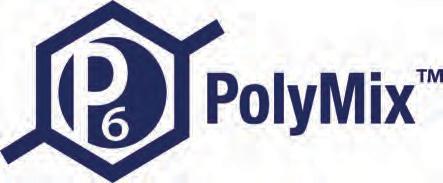

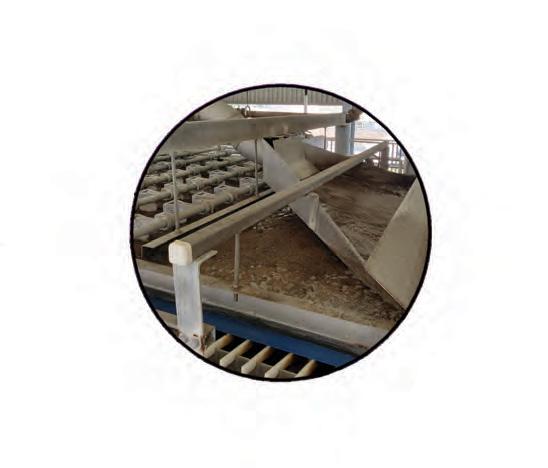
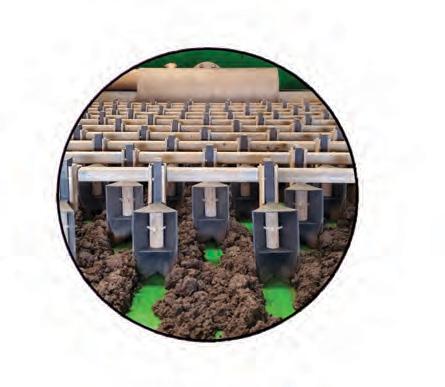
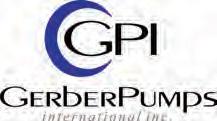

Florida Water Resources Journal • September 2023 9 The P6 Di erence Zero Pump Maintenance 10-Year Wear Warranty Reduce Polymer Increase Cake Solids Optimize System CONTACT: Stephen Gerber PHONE: 407 834 9104 EMAIL: sales@gerberpumps.com PATENTED www.p6polymix.com www.gerberpumps.com Want More from Your Belt Press? (Also Centri f uges and Screw Presses)
Continued from page 8
precipitation most typically occurs as rain, hail, snow, or sleet.
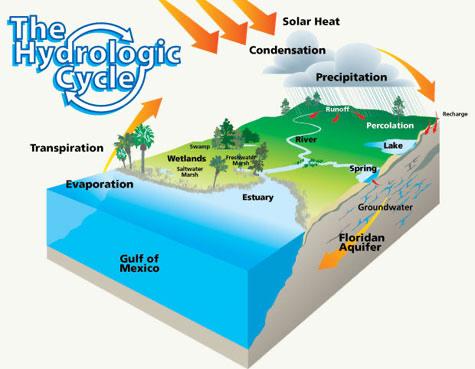
Florida has a subtropical to tropical climate and receives an average of 55 in. of rainfall per year, which was the statewide average for 1981–2010 (Oregon State University [OSU]/ PRISM 2014; Florida Climate Center, 2017). This is almost twice the Unites States average of 31 in. per year, and five times higher than the level of 11 in. per year in the driest U.S. state, Nevada. This, again, was the average for 1981–2010 (National Oceanic and Atmospheric Administration/National Centers for Environmental Information [NOAA/NCEI], 2014, 2017).
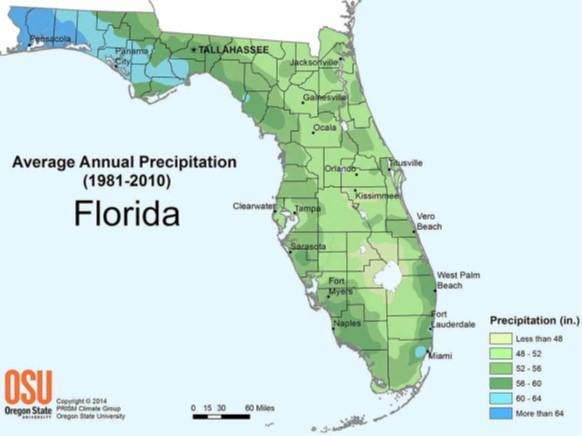
Rainfall varies in amounts and in intensity from one Florida region to another, with the highest mean annual rainfall occurring in
northwest Florida (the Panhandle) and in coastal areas of southeast Florida (Figure 3). In these regions, the average precipitation is about 60 in. per year; other regions, however, receive less rain. For example, from 1981-2010, the Florida Keys had an average of 40 in. of rainfall annually (OSU/PRISM, 2014; Florida Climate Center, 2017a).
Seasonal variations in rainfall are also evident. Traditionally, summer is the wettest season in Florida, with more than half of the annual rainfall occurring during June to September, which is considered the “wet season”; however, this pattern of seasonal precipitation varies (see minimum and maximum monthly precipitation values in Figure 4).

During the wet season, tropical storms are normal in Florida, with some delivering over 10
in. of rainfall during a 24-hour period, which can cause flooding. Hurricane Easy (in 1950) has the highest estimated rainfall of almost 39 in. in 24 hours in Yankeetown, which is in west central Florida. Hurricane Jeanne (in 1980) has the highest official measured state record rainfall of approximately 23 in. within a 24hour period (Florida Climate Center, 2017b). Conversely, spring 2017 will be remembered for its widespread drought conditions, where in May, an astonishing 66 percent of the state registered drought of various severity levels due to low rainfall in the preceding months (Rice, 2017).
In Florida, significant volumes of water are used for residential landscape and agricultural crop irrigation. In the dry spring months, residential homeowners rely on supplemental irrigation for landscaping their yards. In turn, many agricultural crops in Florida are planted in the fall season (when the air temperatures cool down), with harvesting in the winter and spring seasons, using irrigation during dry winter and spring months for supplemental irrigation and frost protection.
Increasing water use efficiency is a high priority for Floridians. For suggestions related to residential irrigation practices, see Florida Friendly Landscaping information at the University of Florida’s website (www.ufl.edu). For best management practices related to agricultural irrigation, consider exploring the manuals available at the Florida Department of Agriculture and Consumer Services website (www.fdacs.gov).
Capturing and storing rainfall in reservoirs to reduce the need for pumping water during drier months is also a strategy being explored by Florida municipalities.
10 September 2023 • Florida Water Resources Journal
Figure 2.The water cycle. (source: Southwest Florida Water Management District)
Figure 3. Florida’s average annual rainfall, 1981–2010. (source: Oregon State University/PRISM)
Figure 4. Statewide monthly precipitation, 1981–2010. (source: Florida Climate Center)
Infiltration
When rainfall reaches the Earth’s surface it can enter the ground (infiltration), collect into surface streams and lakes (runoff), or return to the atmosphere as water vapor (evapotranspiration). The phases of runoff and infiltration are highly interrelated, and are influenced by the form of precipitation, the type and amount of vegetative groundcover, topography, and soil permeability.
Infiltration occurs when water first enters the soil surface zone. Groundwater collects as the water that is not used by plants percolates (or seeps) downward until it encounters a zone (stratum) where the pores in the soil or rocks are saturated. Underground layers of porous material that are saturated with water are called aquifers. The water level can rise and fall in shallow or surface aquifers, depending on local rainfall conditions.
When a shallow groundwater aquifer (Figure 5) is underlain by a stratum of low permeability, which is called a confining unit (e.g., clay), water is forced to move laterally through the aquifer and emerge into a surface spring, stream, or lake. Conversely, when groundwater levels are low, water may flow in the opposite direction—from surface streams and lakes into the shallow aquifer.
Sometimes freshwater exists deep underground in confined aquifers, where the water-bearing aquifer is confined below a stratum of low permeability (e.g., cavities under the clay layer). A confined aquifer can sometimes hold water under sufficient pressure, allowing it to rise above the confining layer when a tightly cased well penetrates the confining unit (think about how a water fountain works). These are known as artesian aquifers. When tapped, they sometimes produce free-flowing artesian wells. Naturally occurring springs also result from this same phenomenon.
Water can also enter aquifers through recharge zones where the water-bearing stratum emerges at the surface or where the confining layer is broken up by faults or natural sinkholes that allow downward infiltration of water. Note that recharge zones may be some distance away from the springs or wells that are fed by the aquifer.
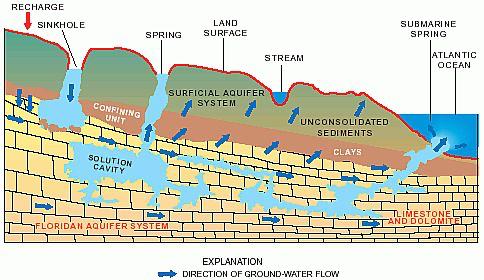
Runoff
Runoff is water that does not enter the ground but collects in rivers, streams, canals, or lakes. This water evaporates, percolates into the ground, or flows out to the ocean. In turn, groundwater can run close to the surface and then discharge to feed springs, streams, rivers, or lakes. Surface runoff, as well as groundwater
infiltration and discharge rates, depend on land use, soils, and weather conditions. Population growth and related changes in land use significantly alter the relationship between the rainfall volume that runs off the land and the volume that recharges the aquifers. Increases in the area covered with impermeable surfaces, such as roads, driveways, and houses and other buildings, can decrease the rate of aquifer recharge, while increasing the volume of runoff. Increased runoff volumes can potentially impact the quality of water in rivers, lakes, and canals because runoff can carry a variety of pollutants.
As Alan Levere, with the Connecticut Department for Environmental Protection, has stated, “A river is the report card for its watershed.”
In Florida, surface runoff and groundwater discharge feeds more than 1,700 streams and rivers (Florida Department of Environmental Protection [FDEP], 2016). Of Florida’s five largest streams, four are in the drainage basins of north Florida: the Apalachicola, Suwannee, Choctawhatchee, and Escambia rivers (Figure 8). The fifth largest stream is the St. Johns River, which flows north from its headwaters near Vero Beach to its mouth at the Atlantic Ocean in Jacksonville.
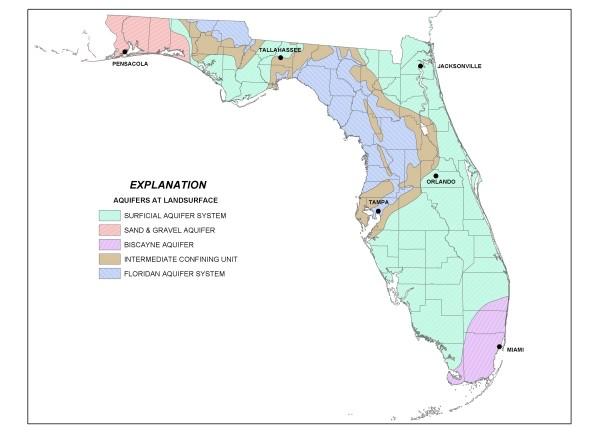
Evapotranspiration
An additional stage of the hydrologic cycle is evapotranspiration, which is a combined process of evaporation from surfaces and transpiration through plant leaves (Irmak and
Continued on page 12
Florida Water Resources Journal • September 2023 11
Figure 5. Diagram of a Floridan aquifer system. (source: U.S. Geological Survey)
Figure 6. Florida’s aquifers. (source: Florida Department of Environmental Protection)
Continued from page 11
Haman, 2021). Generally, evaporation is the process by which water is changed into its gaseous form (water vapor). Part of the rainfall evaporates from the land surface back to the atmosphere.
The potential for evaporation from an area depends on atmospheric conditions, such as temperature and wind speed. Evaporation is also affected by other factors, such as soil permeability, the type and amount of vegetative groundcover, and slope of the land. For example, evaporation is relatively low in parts of northwest Florida. This area is well drained and, compared with other parts of the state, has steep slopes. Much of the area is covered by permeable soils that readily pass rainfall into a shallow aquifer. An impermeable ground
layer underlying the shallow aquifer in this area ensures that most of the rainfall appears in streams. Conversely, for portions of extreme south Florida, where topography is flat and drainage is poor, water is readily available for evaporation.
In turn, transpiration is the process whereby moisture in plants is returned to the atmosphere through plant leaves. Many plants rely on rainfall that infiltrates the soil from the surface for moisture.
Water deficiency exists when potential evapotranspiration (i.e., evaporation plus moisture demand by plants) exceeds actual evapotranspiration (i.e., soil moisture that is actually available for evaporation and plant use).
Monthly climatic water budgets indicate
that in Key West, water deficiency persists throughout the year; in the Panhandle, water deficiencies rarely occur; and in the rest of the state, water deficiencies are common in winter and spring.
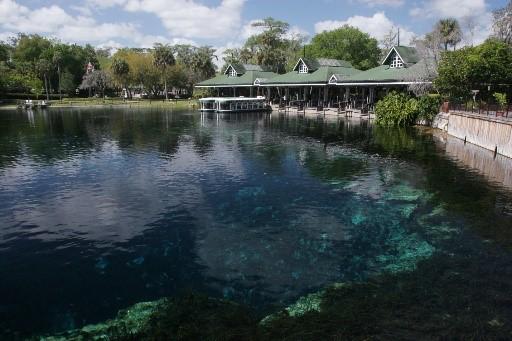
Florida’s Aquifers
Florida has several prolific aquifers (Figure 6) that yield large quantities of water to wells, streams, lakes, and springs—some of the largest in the world. The principal source of groundwater for most of the state is the Floridan aquifer—the source of the municipal water supply in north and central Florida. It also yields water to thousands of domestic, industrial, and irrigation wells throughout the state.

A shallow, nonartesian surficial aquifer is present across much of the state, but it’s not an important source of groundwater in most areas because a better supply is available from deeper aquifers. In rural areas, however, where residential water requirements are relatively smaller by comparison to other areas, this aquifer is tapped by small-diameter wells. The water in this shallow aquifer is derived primarily from local rainfall.
A nonartesian, sand-and-gravel aquifer is the major source of groundwater in the extreme western part of the Panhandle. Water in the sand-and-gravel aquifer is derived chiefly from local rainfall and is of good chemical quality. Wells tapping this aquifer furnish most of the groundwater used in Escambia and Santa Rosa counties, and part of Okaloosa County.
The nonartesian Biscayne aquifer underlies an area of about 3,000 sq mi in Miami-Dade, Broward, and Palm Beach counties on Florida’s lower east coast. Water in the Biscayne aquifer is derived chiefly from local rainfall and, during dry periods, from canals ultimately linked to Lake Okeechobee. The Biscayne aquifer is an important water supply for the lower east coast Florida cities.
Thick layers of porous limestone of the Floridan aquifer underlie all of the state and extend beyond the state boundaries to Georgia, South Carolina, Alabama, and Mississippi. In south Florida, water from the Floridan aquifer is too highly mineralized (i.e., salty) to be usable. Water in the Floridan aquifer is replenished by rainfall in north and central Florida (as well as in south Georgia and south Alabama), where the aquifer emerges at the surface or is covered by permeable materials, or where the confining material is broken up by sinkholes.
In these areas, it’s especially important to exercise appropriate practices when gardening,
Continued on page 14
12 September 2023 • Florida Water Resources Journal
Figure 7. Silver Springs, Florida. (source: Sally Lanigan, UF/IFAS)
Figure 8. Florida rivers. (source: U.S. Geological Survey)
Plugged impeller

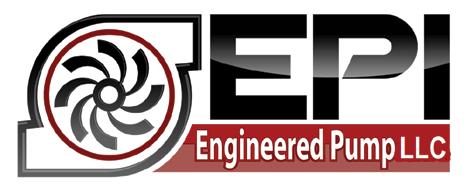
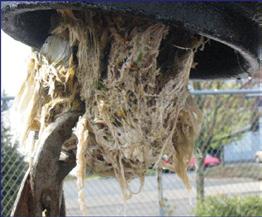
This is the pump you have been waiting for to replace the throw away grinder pump that become boat anchors The right material, the right selection near BEP, and built for long term durable service.




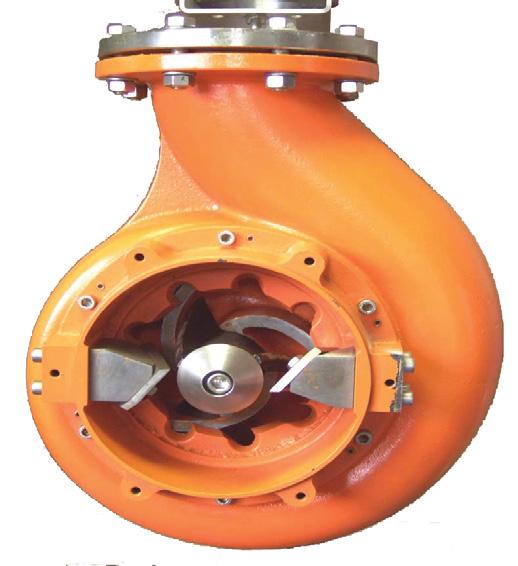




Florida Water Resources Journal • September 2023 13 CHOPPER PUMP SERIES EPI CHOPPER PUMP APPLICATIONS • Wastewater Treatment • Sewage Pump Stations • Section 8 Housing • Prisons - Jails • Nursing Homes • RV Parks • Dairy Farms WWW.ENGINEERED-PUMP.COM Manufactured in the USA by Veterans Contact: (800) 383-2651 * with EPI selection and review U.S. and Canadian patent CHED CHOPPING and PUMPING UNMATCHED CHOPPING and PUMPING • Free Trial Runs • 5 Year Warranty • Factory Direct • Made in the USA • Veteran Owned
“THE BEAST IS HERE”
managing septic systems, or growing agricultural crops. These practices can directly impact the quality of water in the aquifer, and hence, the quality of water withdrawn for drinking and other purposes, and the quality of water in the springs fed by the aquifer system.
Florida’s Springs
Except those areas where its limestone formations break the surface of the ground, the Floridan aquifer underlies several hundred ft of sediment, including thick beds of relatively impermeable material that restrict upward movement of the water (Marella and Berndt, 2005). This restriction causes the aquifer to have artesian pressure and make the water move through the openings in impermeable layers, thereby creating springs (Figure 7). In Florida, there are over 1,000 springs, including more than 30 first-magnitude springs, with an average flow of over 100 cu ft per second, or 64.6 mil gal per day (Knight, 2017).
Spring water emerges from cavities in the porous limestone of the Floridan aquifer and often contributes to the flow or level of water in streams and lakes. The springs depend on the same resources from which water is withdrawn for public water supplies, private water wells, and agricultural production. Increases in water withdrawals for any purpose also reduce spring flows. The Chinese proverb, “when you drink water, remember the spring,” applies to Florida literally.
Florida’s Rivers
The largest of Florida’s streams by volume of water (i.e., discharge flow) is the Apalachicola River, which flows south from its headwaters north of Atlanta and past the confluence of the Flint and Chattahoochee rivers at the GeorgiaFlorida line. The river drains 17,200 sq mi in Alabama and Georgia, and 2,400 sq mi in Florida. From 1978 to 2012, mean discharge of the Apalachicola River at Sumatra (midpoint of the river length in Florida) was 24,000 cu ft per second, or 15 bil gal per day (bgd), with a variation between approximately 10,000 and 37,000 cu ft per second, or from 6 to 24 bgd (USGS, 2014a).
Despite the fact that the river carries significant volumes of water, the need for water is ever-growing due to population increases in Alabama, Florida, and Georgia. Since the 1990s, the three states have argued over the amount of water each of the states should receive from the river system.
The priorities for each state are:
S Georgia - Atlanta public water use
S Alabama - Agricultural irrigation S Florida - Freshwater oyster production in Apalachicola Bay
In other words, wise management and allocation of water is very important.
The Suwannee River, Florida’s secondlargest river by volume of discharge, drains about 11,000 sq mi from its headwaters in Okefenokee Swamp in south Georgia to its mouth at the Gulf of Mexico. At the measuring station in Wilcox (33 mi north of the Gulf of Mexico), the Suwannee River discharges about 10,000 cu ft per second, or 6 bgd (average for 1930–2013). The variation is between 3,000 and 25,000 cu ft per second, or from 2 to 16 bgd (USGS, 2014b). The Santa Fe River flows into the Suwannee River, as do several springs, such as Troy, Ichetucknee, Fanning, and Manatee.
The Choctawhatchee River, Florida’s thirdlargest river by volume of discharge, drains 3,100 sq mi in southeast Alabama and 1,500 sq mi in northwest Florida. Choctawhatchee Bay opens to the Gulf of Mexico in the vicinities of Fort Walton Beach and Niceville. At the measurement station near Bruce, 21 mi above the Choctawhatchee River’s mouth, average discharge is about 7,000 cu ft per second, or more than 4 bgd (average for 1931–2013). The variation is between 3,000 and 12,000 cu ft per second, or from 2 to 8 bgd (USGS, 2014c).
The Escambia River and its tributaries drain 3,760 sq mi in Alabama and 425 sq mi in northwest Florida before flowing into Pensacola Bay at a rate of almost 7,000 cu ft per second, or more than 4 bgd, measured near Molino in 1988–2013 (USGS, 2014d).
Of Florida’s five largest rivers, only the St. Johns River is entirely within the borders of the state. Managing the flow or quality of water in the other four largest rivers in Florida requires coordinating efforts with other states. The St. Johns River drains about 9,400 sq mi from marshes west of Vero Beach to its mouth at the Atlantic Ocean in Jacksonville. It’s one of only a few U.S. rivers that flows north. At its mouth near Jacksonville, flow is about 7,000 cu ft per second, or more than 4 bgd, which was the average for 1970–2011 (USGS, 2014e). The St. Johns River connects seven major lakes, from Lake Washington to Lake George, and its tributary, the Ocklawaha River, connects nine lakes, from Lake Apopka to Lake Lochloosa.
Other significant streams include the Kissimmee River, with headwaters near Orlando, flowing south and emptying into Lake Okeechobee in the center of the state; the Peace River, which flows into Charlotte Harbor; and the Withlacoochee River, flowing to the northwest from the Green Swamp in central
Florida and emptying into the Gulf of Mexico near Yankeetown.
In addition, the St. Lucie Canal connects Lake Okeechobee to the Atlantic Ocean on the east coast near Stuart, and the Caloosahatchee Canal connects Lake Okeechobee to the Gulf of Mexico on the west coast near Fort Myers. Together, these two canals form a navigable cross-state waterway. Other canals, from Lake Okeechobee to the Atlantic Ocean, are the Hillsboro, North New River, Miami, and West Palm Beach canals (Fernald and Purdum, 1998).
In addition to the rivers, Florida has more than 7,700 lakes, with the largest, Lake Okeechobee, being in the top 10 largest lakes in surface area in the U.S. at 467,200 acres (Fernald and Purdum, 1998; FDEP, 2016). Florida also has many types of wetlands, including the Everglades (south Florida) and Green Swamp (central Florida), which provide habitats for a variety of plants and wildlife and serve as groundwater recharge areas.
Overall, the streams, rivers, springs, lakes, and wetlands produced by the runoff phase of Florida’s hydrologic cycle are familiar to Floridians as water supply sources, recreational attractions, transportation routes, and havens for the state’s abundant fish and wildlife populations.
Saltwater Intrusion
Florida’s geography as a peninsula between two bodies of saltwater creates the potential for saltwater intrusion into the aquifers (i.e., into the fresh groundwater supply). Saltwater is denser than freshwater and exerts a constant pressure to permeate the porous aquifers. As long as freshwater levels in the aquifers are above sea level, the freshwater pressure keeps saltwater from moving inland and upward into the aquifers.
For example, the level of water flowing through south Florida’s coastal canals is generally several ft above sea level, which is enough to prevent ocean water from moving inland and upward into the aquifer. If during dry periods, however, the freshwater levels in canals without locks and dams fall to or below sea level, saltwater would move upward in the canals.
In some places, excessively pumping a well can increase saltwater intrusion. If, however, water is pumped at a rate faster than the aquifer is replenished, the pressure of freshwater over saltwater in the land mass is decreased. This decrease may cause the level of the saltwaterfreshwater interface to rise in the aquifer, degrading water quality. This problem must be controlled by careful attention to well location
14 September 2023 • Florida Water Resources Journal
Continued from page 12
and pumping rates. The problem of saltwater intrusion is aggravated by periods of drought when there is not enough rainfall to replenish the freshwater aquifers.
Conclusions
The hydrologic water cycle is a useful way to describe and categorize Florida’s water resources. The cost and feasibility of making water supplies available for municipal, agricultural, and industrial uses is determined to a great extent by the water cycle patterns of rainfall, runoff, and infiltration over time and space.
It’s important to remember that while Florida receives significant rainfall every year, most of this water is returned to the environment through evapotranspiration and outflow of the rivers. Only a very small percentage infiltrates into the ground to replenish the underground freshwater reservoirs and aquifers that is depended on for drinking water.
Increasing water withdrawals from aquifers for human needs reduces the amount of water available to feed the springs, rivers, and wetlands—not only now, but for years to come.
References
• Chesnes, M., 2021. Florida Surpasses Grim Milestone of 1,000 Manatee Deaths in 2021; Starvation a Large Factor. Treasure Coast Newspapers, Nov. 17, 2021. https://www.usatoday.com/story/news/ nation/2021/11/17/florida-manatee-deaths2021-starving-seagrass-loss/8654284002/.
• Fernald E.A., and E.D. Purdum (editors), 1998. Water Atlas of Florida. Tallahassee, Fla.: FSU/ISPA.
• Florida Climate Center, 2017a. Precipitation. Tallahassee, Fla.: Florida Climate Center. http://climatecenter.fsu.edu/productsservices/data/statewide-averages/ precipitation.
• Florida Climate Center, 2017b. Hurricanes. Tallahassee, Fla.: Florida Climate Center. http://climatecenter.fsu.edu/topics/ hurricanes.
• Florida Department of Environmental Protection (FDEP), 2015. Aquifers. Tallahassee, Fla.: FDEP. https://prodlamp. dep.state.fl.us/swapp/Welcome/links/ aquifers_v.
• Florida Department of Environmental Protection (FDEP), 2016. Final Integrated Water Quality Assessment for Florida: 2016 Section 303(d), 305(b), and 314 Report and Listing Update. Tallahassee, Fla.: FDEP.
• Florida Fish and Wildlife Conservation
Commission (FFWCC), 2021. Manatee Mortality Statistics. Tallahassee, Fla.: FFWC. https://myfwc.com/research/manatee/ rescue-mortality-response/statistics/ mortality/.
• Irmak S., and D.Z. Haman, 2021. Evapotranspiration: Potential or Reference? EDIS #AE256. Gainesville, Fla.: UF/IFAS Extension. https://edis.ifas.ufl.edu/ae256.
• Knight, R., 2017. Florida: Land of 1,000 Springs. High Springs, Fla.: Florida Springs Institute. https://floridasprings.org/.
• Marella, R.L., and M.P. Berndt, 2005. Water Withdrawals and Trends From the Floridan Aquifer System in the Southeastern United States, 1950–2000. Reston, Va.: US Geological Survey (USGS).
• National Oceanic and Atmospheric Association, National Centers for Environmental Information (NOAA/NCEI), 2017. National Centers for Environmental Information, Climate at a Glance: U.S. Time Series. Asheville, N.C.: NOAA/NCEI. http:// www.ncdc.noaa.gov/cag/.
• National Oceanic and Atmospheric Association, National Centers for Environmental Information (NOAA/NCEI), 2014. Extremes in U.S. Climate. Asheville, N.C.: NOAA/NCEI. https://www.ncdc.noaa. gov/climate-monitoring/.
• OSU/PRISM, 2014. Florida Average Annual Precipitation, 1981–2010. Corvalis, Ore.: PRISM Climate Group, Oregon State University.
• Rice, D., 2017. Move Over, California: Florida has the USA’s Worst Drought. USA Today, May 5, 2017. https://www.usatoday. com/story/weather/2017/05/05/moveover-california-florida-has-usas-worstdrought/101331462/.
• United States Geological Survey (USGS), 2016a. Water Use in Florida. Reston, Va.: USGS. https://fl.water.usgs.gov/infodata/ wateruse.html.
• United States Geological Survey (USGS), 2016b. The Water Cycle – USGS Water Science School: Springs – The Water Cycle. Reston, Va.: USGS. https://water.usgs.gov/ edu/watercyclesprings.html.
• United States Geological Survey (USGS), 2014a. Surface Water Annual Statistics for Florida. USGS 02359170 Apalachicola River near Sumatra, Florida. Reston, Va.: USGS. http://waterdata.usgs.gov/fl/ nwis/annual/?referred_module=sw&site_ no=02359170&
por_02359170_1=2396790,00060,1,1978, 2014&year_type=C&format=html_ table&date_format=YYYY-MMDD&rdb_compression=file&submitted_ form=parameter_selection_list.
• United States Geological Survey (USGS), 2014b. Surface Water Annual Statistics for Florida. USGS 02323500 Suwannee River near Wilcox, Florida. Reston, Va.: USGS. http://waterdata.usgs.gov/nwis/annual?site_ no=02323500&agency_cd=USGS&por _02323500_7=2396494,00060,7,1931,2013& year_type=W&referred_ module=sw&format=rdb.
• United States Geological Survey (USGS), 2014c. Surface Water Annual Statistics for Florida. USGS 02366500 Choctawhatchee River near Bruce, Florida. Reston, Va.: USGS. http://waterdata.usgs.gov/fl/nwis/ annual?site_no=02366500&agency_ cd=USGS &por_02366500_2=2396875,00060, 2,1931,2014&year_type=W&referred_ module=sw&format=rdb.
• United States Geological Survey (USGS), 2014d. Surface Water Annual Statistics for Florida. 02376033 Escambia River near Molino, Florida. Reston, Va.: USGS. http:// waterdata.usgs.gov/fl/nwis/annual?site_ no=02376033&agencycd=USGS&por_ 02376033_1=2396992,00060,1,1984,2014& year_type=W&referred_module=sw& format=rdb.
• United States Geological Survey (USGS), 2014e. Surface Water Annual Statistics for Florida. USGS 02246500 St. Johns River at Jacksonville, Florida. Reston, Va.: USGS. http://waterdata.usgs.gov/fl/nwis/ dv?cb_00060=on&format=rdb&site_ no=02246500&referred_module=sw& period=&begin_date=1971-10-01&end_ date=2014-11-02.
ª United States Geological Survey (USGS), 2007. EDNA-Derived Watersheds for Major Named Rivers. KML Watershed Index. Reston, Va.: USGS. http://edna.usgs.gov/ watersheds/kml_index.htm.
• University of Florida Institute of Food and Agricultural Science, Center for Public Issues Education (UF/IFAS PIE Center), 2016. Water Quantity and Quality. Gainesville, Fla.: UF/IFAS PIE Center. http://www.piecenter. com/issues/water/water/.
This is Electronic Data Information Source (EDIS) document FE757, a publication of the Food and Resource Economics Department, UF/ IFAS Extension. Originally published December 2008 as WQ101 by Roy Carriker. Revised November 2014, June 2017, and January 2022. Visit the EDIS website at https://edis.ifas.ufl. edu for the currently supported version of this publication. S
Florida Water Resources Journal • September 2023 15
Water Resources, Emerging Issues, and Getting Involved
Greg D. Taylor, P.E.

funds to provide clean water and sanitation worldwide. A world where no one starves, or is worried about their basic needs, such clean water, is a happier world (you can quote me on that). Volunteering plays a crucial role in achieving such a world.
irst off, I would like to thank our FSAWWA staff as well as our supportive community of volunteers. The efforts of our staff have undoubtedly played a significant role in the success of FSAWWA, and our volunteers are provided a fun and fulfilling experience. Over the past 20 years, I have built lifelong friendships and felt a strong sense of community within our organization and I plan to continue to be active long after my tenure as chair is over. I hope that our volunteers take great pride in the successes that they have achieved through their work, dedication, and selflessness to benefit our members.
Volunteering
Volunteering is an incredibly rewarding experience that allows individuals to make a positive impact by selflessly donating their most precious resource—time—to benefit someone else. The dedication of our volunteers is seen in many ways, from hosting events to their tireless efforts educating, communicating, and raising
While it’s true that life is full of demands, volunteering can be simple and low stress. Please reach out to the leadership team or the great staff of FSAWWA to learn how you can be involved and join others in making a difference.

Water Resources Management
Florida’s abundant water resources, including rivers, lakes, and springs, are indeed crucial for supporting wildlife habitats, providing drinking water, and offering tourism opportunities for visitors to enjoy. Each day our utility members work hard and are proud of their vital role in providing clean, safe drinking water for their customers and our great state’s visitors, all while protecting our environment.
As with any complex system, unexpected challenges and opportunities arise. Our member utilities recognize these challenges, develop solutions and opportunities, and communicate the results to those impacted. We all share in the duty to manage water as a precious resource, because remember: No Water, No LifeTM!
Water resources management is generally defined as the process of planning, developing, distributing, and monitoring water supplies to meet human and ecological needs. From
providing clean drinking water, supporting agriculture, sustaining ecosystems, generating energy, and managing industrial processes, effective water resources management is essential for the overall well-being of society, the economy, and the environment. By ensuring sustainable and responsible water use, we can address a wide range of challenges and create a more-resilient and prosperous future for all.
Challenges to effectively managing water include:
S Lack of conservation
S Scarcity of groundwater
S Ecosystem disruption
S Transboundary conflicts
To manage water use, a number of strategies have been implemented, such as installing water meters, developing tiered rate structures to discourage excessive use, and providing incentives for customers to install new low-flow fixtures, use rain gauges, and practice xeriscaping.
Did you know approximately 70 percent of Florida’s water supply is from groundwater? It is, and unfortunately, with the burgeoning population of Florida, our groundwater supply is being strained. These strains then result in impacts to other water sources, such as lakes, rivers, and springs, which in turn cause ecological issues that make it harder for animals to thrive and result in less water for aquatic animals to survive and reproduce. Water knows no boundaries and we must look at water wholistically to provide the best management as it travels across our paths.

16 September 2023 • Florida Water Resources Journal FSAWWA SPEAKING OUT
Each state, county, city, village, town, community, and family has a duty to manage its water resources efficiently. There is not a single solution that is effective for everyone, so establishing best management practices is essential. Developing an integrated water resources plan (“One Water”) is a good first step to recognize the current conditions, identify potential limitations of supply, and establish demands for future needs. Our collaboration with elected officials and regulators is needed to ensure new legislation and rules to provide guidance and help fund and streamline the water management process.
Water resources management is a multifaceted challenge that demands collective efforts from governments, industries, communities, and individuals. By embracing innovative technologies, adopting sustainable practices, and fostering cooperation, we can address water scarcity, protect water quality, and safeguard the health of our ecosystems. Prioritizing water resources management is not only crucial for the present, but also paves the way for a sustainable and thriving future for generations to come.
Emerging Issues
In previous columns I’ve discussed some of our industries emerging regulatory concerns. Per- and polyfluoroalkyl substances (PFAS) is one of those hot topics because of how it impacts people and travels through our environment. How we test for it, treat water to remove it, and eventually manage its destruction or disposal are all current topics of discussion and will have an impact on the water industry. To address this, a National Primary Drinking Water Rule maximum contaminant level for drinking water has been proposed and we expect a final rule from the U.S. Environmental Protection Agency (EPA) on this before the end of the year. Since water utilities are passive recipients of these chemicals, there is great concern that by removing these chemicals and subsequently disposing of them, utilities will be liable for the long-term clean up per the Comprehensive Environmental Response, Compensation, and Liability Act (CERCLA).
Add to this, that as water supplies grow more-scarce, we are turning to potable reuse as an alternative water supply, especially with the increase in research and development of potable reuse treatment alternatives being done by our experts.
While we normally look at contaminants for emerging issues, there are other issues that have significant impact on our industry. Resiliency, cybersecurity, and climate change are all emerging issues of concern.
Also, our members have identified workforce
issues as their top concern. I remember over 10 years ago, when we were coming out of the Great Recession, one of the main issues discussed was that our workforce consisted mainly of baby boomers who would be retiring soon and how to plan for it. Now, coming out of the post-COVID time frame, the “Silver Tsunami” has been the topic, with older workers retiring and causing a loss of experience, and as anyone with experience will tell you, nothing prepares you like the experience of having done a task. What’s worse is that finding staff to replace the retiring workers is impacting all aspects of our industry.
A lesson for all of us to take away is to ask those who have come before us for insight on what they have learned and experienced and apply that to our own efforts. Please make sure to teach and share experiences with those around you so we can all gain more knowledge.
Lastly, and probably most importantly, be kind. Be kind to yourself, your coworkers, your family, and to complete strangers. While our population has exponentially increased, we are all a community of humanity and a nice little gesture in your day can have a profound impact.
To paraphrase a quote that is a favorite of mine for day-to-day activities is:
“Be the change you want to see in the world.”
Final Thoughts
We all have a tendency to take water for granted. When water doesn’t come out of the tap, or isn’t clear, or doesn’t have the desired pressure, we call someone to address it. Remember, not everyone has the luxury of water on demand, and utilities are constantly under pressure to perform because we must.
We have always recognized our water (and wastewater) utility employees as “first responders,”
and now, this designation has been codified into law during the past legislative session and garners a certain level of trust with the communities served.
Florida 2051 Activities

On August 18, the FSAWWA Florida 2051 Committee and the Water Utility Council cohosted the second annual Utility Community Innovation, Technology, and Financial Workshop. During this workshop we discussed innovation, emerging issues, funding assistance, workforce woes, and public outreach.
Please consider joining our FSAWWA Water Utility Council and/or our Florida 2051 Committee and be a part of our regulatory and legislative advocacy and share the knowledge of our industry.
And other water groups could use your help and expertise, too!
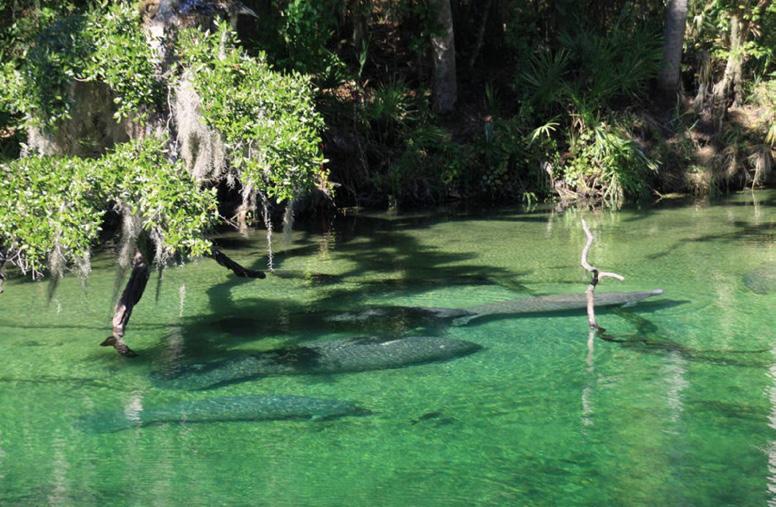
• Water Utility Council: www.fsawwa.org/page/ WaterUtilityCouncil
• FSAWWA Florida 2051 Committee: www. fsawwa.org/page/FL2051
• Water Equation: www.awwa.org/WaterEquation/about-the-water-equation
• Water For People: www.waterforpeople.org S
Florida Water Resources Journal • September 2023 17
Awards From the 2023 Florida Water Resources Conference




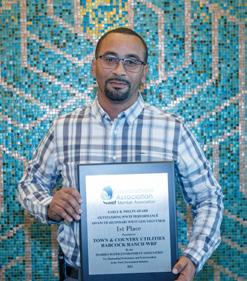

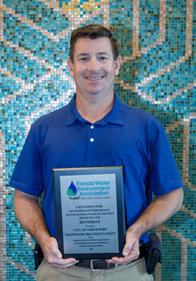
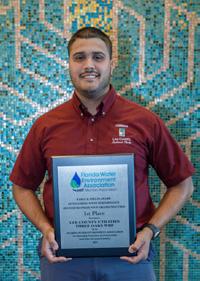
Each year the Florida Water and Pollution Control Operators Association, Florida Water Environment Association, and Florida Section of the American Water Works Association honor outstanding individuals, utilities, and other organizations for contributions to the state’s water and wastewater industry. The awards were presented at the two lunches held during the conference.
Earle B. Phelps Awards
Wastewater Treatment Facility Runner-Up

County Public Utilities Northwest Region Water Reclamation Facility Accepted by (left to right) Kevin Grant, Isaiah Shapiro, Antoine Harris, Richard Scheuch, and Gregg Rollo.

18 September 2023 • Florida Water Resources Journal FWRC 2023 – H2YOU!
Advanced Wastewater Treatment Facility First Place Lee County Utilities Fiesta Village Water Reclamation Facility
Advanced
Advanced Wastewater
Honorable
JEA
Advanced Secondary Wastewater Treatment Facility Greater Than 5 MGD First Place Lee County Utilities Three Oaks Water Reclamation Facility Accepted by Dereck Perez. Advanced Secondary Wastewater Treatment Facility
Than
Runner-Up City of
Port Wastewater Treatment Facility Accepted
Vuolo. Advanced Secondary Wastewater Treatment Facility Greater Than
MGD Honorable Mention Toho Water Authority Cypress
Water Reclamation Facility Accepted
Advanced Secondary Wastewater Treatment Facility Less Than 5 MGD First Place Town & Country Utilities Babcock Ranch Water Reclamation Facility Accepted by Nathaniel Mastroeni. Advanced Secondary Wastewater Treatment Facility Less Than 5 MGD Runner-Up Polk County Utilities Southwest Regional Accepted by Todd Potter and Brett Miller. Advanced Secondary Wastewater Treatment Facility Less Than 5 MGD Honorable Mention Polk County Utilities Northwest Regional Accepted by Ed Clark.
Accepted by Laura Longa.
Hillsborough
Treatment Facility
Mention
Nassau Regional Water Reclamation Facility Accepted by Anthony Fedderly.
Greater
5 MGD
North
by Michael
5
West
by Angela Perez.
Secondary Wastewater Treatment Facility First Place JEA Monterey Water Reclamation Facility
Accepted by Josh Williams.
David W. York Water Reuse System of the Year Awards
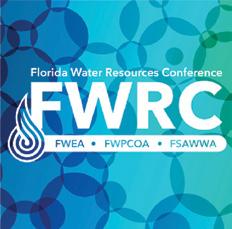

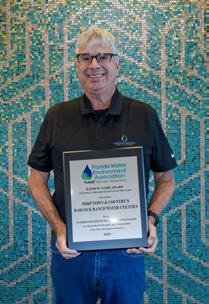



Greater Than 15 MGD Collier County Water Sewer District
Accepted by (left to right) Juan Arteaga, Robert Von Holle, Diane Dipascale, and Robert Kaine.
Secondary Wastewater Treatment Facility Runner-Up
Polk County Utilities Sun Ray Wastewater Treatment Facility
Accepted by Todd Potter and Brett Miller.
1 to 5 MGD Toho Water Authority Parkway Water Reclamation Facility
Accepted by Angela Perez and Justin Moran.
Less Than 1 MGD MSKP Town & Country’s Babcock Ranch Water Utilities
Accepted by Jon Meyer.
WR3 Reuse Project of the Year St. Lucie County Utility Division’s Public Education and Outreach Accepted by Nadege Pierre.
Wastewater Collection System Awards


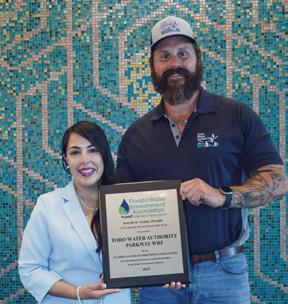

Secondary Wastewater Treatment Facility Honorable Mention
Polk County Utilities Waverly Wastewater Treatment Facility
Accepted by Todd Potter and Brett Miller.
Medium City of Pompano Beach Utilities Department
Accepted by Steve Almyda and Bobby Clayton.
Small St. Lucie County Utilities
Accepted by (left to right) Robert Stevenson, Christopher Gamble, and Brendan Cummins.

Florida Water Resources Journal • September 2023 19 FWRC 2023 – H2YOU!
Safety Awards
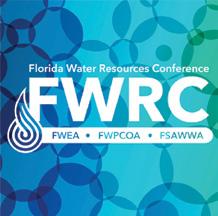
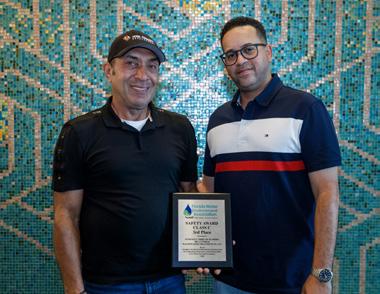

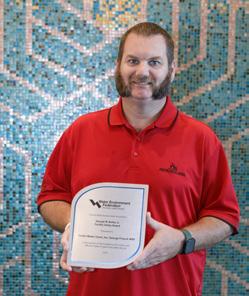







20 September 2023 • Florida Water Resources Journal
FWRC 2023 – H2YOU!
Class A, First Place Gainesville Regional Utilities Combined Water Reclamation Facilities
Accepted by (left to right) Natalia Larsen, Debbie Daugherty, and Richard Hutton.
Class A, Second Place Toho Water Authority South Bermuda Water Reclamation Facility
Accepted by Angela Perez and Justin Moran.
Class A, Third Place City of Clearwater Combined Reclamation Facilities Accepted by Ryan Alexander and Jessica Caballero-Ashmeade.
Class B, First Place Lee County Utilities Three Oaks Water Reclamation Facility Accepted by Dereck Perez.
Class B, Second Place City of North Port Wastewater Treatment Facility Accepted by Michael Vuolo.
Class B, Third Place City of Palm Coast Wastewater Treatment Plant #1 Accepted by Daniel Niemann.
George W. Burke Jr. Facility Safety Award Destin Water Users Inc. George French Water Reclamation Facility Accepted by Jason McGlaughlin.
Class C, First Place City of Pompano Beach Utilities Accepted by Mike Delguzzi.
Class C, Third Place Seminole Tribe of Florida Big Cypress Wastewater Treatment Plant Accepted by Bassem Sanaallah and Juan Valdez
Public Education Awards




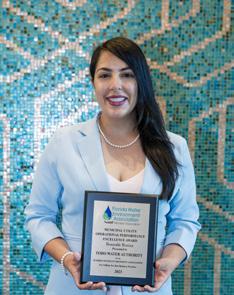
“Conserving Water for a Cleaner Plant City”
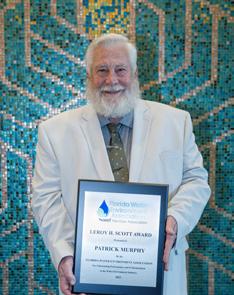
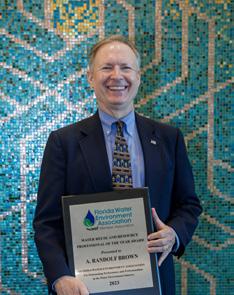





Water
and
Florida Water Resources Journal • September 2023 21 FWRC 2023 – H2YOU!
Organization Category Florida Government Utility Authority
Accepted by Matthew Rihs.
Campaign Category City of Plant City
Accepted by Lynn Spivey and Patrick “Murf” Murphy.
Municipal Utility Operational Performance Excellence Award Broward County Water and Wastewater Services
Accepted by Mark Darmanin and Ronaldo Nigaglioni.
Environmental Stewardship Award Collier County Water Sewer District
Accepted by (left to right) Juan Arteaga, Robert Von Holle, Diane Dipascale, and Robert Kaine.
Municipal Utility Operational Performance Excellence Award Honorable Mention Toho Water Authority
Accepted by Angela Perez.
Reuse
Resource Professional of the Year Award
Presented to A. Randolph Brown.
Leroy H. Scott Award Presented to Patrick “Murf” Murphy.
Athur Sidney Bedell Award Presented to Ronald R. Cavalieri.
Thomas T. Jones Award Presented to Cody Diehl.
Ralph H. Baker Award Presented to Mike Demko.
William D. Hatfield Award Presented to Jamie Hope.
Service Awards

FSAWWA Awards

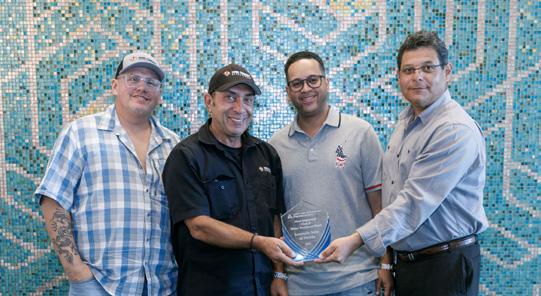


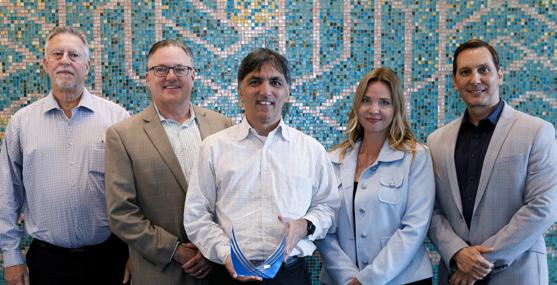

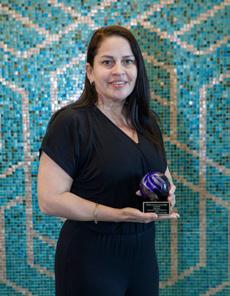

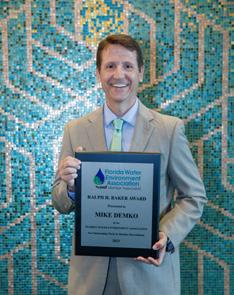

22 September 2023 • Florida Water Resources Journal FWRC 2023 – H2YOU!
Young Professional of the Year Award
Presented to Colten Brickler.
Delegate Award 2019-22
Presented to Kristiana Dragash.
Presented to Ada Levy.
Presented to Chris Fasnacht.
Water Treatment Plants
Outstanding Class A Cosme Water Treatment Plant
Accepted by R. Scott Lewis.
Outstanding Class B
Eastern Regional Water Supply Facility (Orange County) Accepted by (left to right) Carlos Torres, Marc Cannata, Christophe Robert, Julia Siemen, and Ed Torres.
Outstanding Class C City of Jacksonville Beach Water Plant 2 Accepted by Ryan Deeney and Robert Delg.
Most Improved Class A Peace River Manasota Regional Water Supply Authority
Accepted by Richard Anderson.
Most Improved Class B Seminole Tribe of Flroida
Accepted by (left to right) John Cypress, Bassem Sanaalah, Juan Valdez, and Juan Mata.
Most Improved Class C Town & Country Utilities Accepted by Nathaniel Mastroeni.
FWPCOA Awards




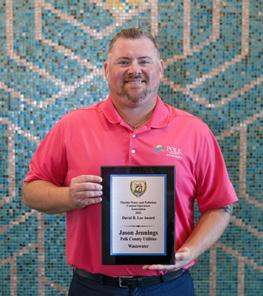



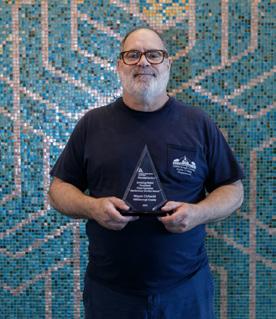

Florida Water Resources Journal • September 2023 23
Drinking Water Treatment Plant Operator Meritorious Service Award
Presented to Wayne Cichocki.
First Place Top Ops Challenge Traveling Trophy
Presented to (left to right) Vincent Domanico, Karen Lewis, and Kendra Phillips.
Marvin N. Kaden Award for Outstanding Water Treatment Plant Operator
FWRC 2023 – H2YOU!
Presented to Carlos E. Torres.
David B. Lee Award
Reclaim Presented to Frank O. Neal, City of Winter Haven.
Wastewater Presented to Jason Jennings, Polk County Utilities.
Water Presented to Carel L. Bent, City of Pompano Beach Water.
Pat Flanagan Award
Presented to Teresa “Terry” McVeigh and accepted by Tim McVeigh.
50+ Year Membership Award
Presented to David Pickard.
SCADA Cybersecurity in Today’s World
Mike Stoup and Robert (RJ) Burney
Supervisory control and data acquisition (SCADA) systems, long hidden behind the network room or control panel door and separated from the internet by industryspecific protocols, are now a popular target for cybersecurity attacks.
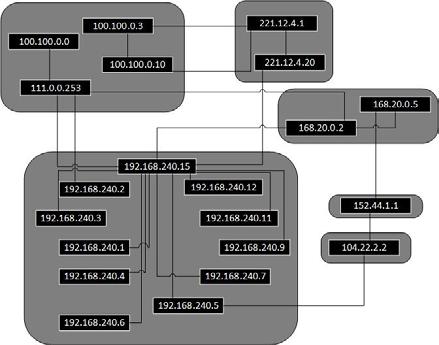
The ability to remotely control a water facility and, for instance, disrupt production or alter the chemical treatment process, is an attractive target for people who want to do harm. The advancement of SCADA systems, the introduction of Ethernet-enabled devices, and the demand for remote access have made these systems far more accessible to the outside world and much more vulnerable to attacks. This is further exacerbated by SCADA vendor products becoming more reliant on Ethernet and requiring out-of-network communications for new features. These vulnerabilities, coupled with a lack of security requirements from the government and an outdated security posture, have put water and wastewater systems at significant risk.
This article will show some of the main reasons for performing a cybersecurity audit, what a proper audit should include, and what the deliverables should be. It will not include scary stories to drive the idea home that cybersecurity audits are necessary as the need should already be understood.
Standards and Current Activities
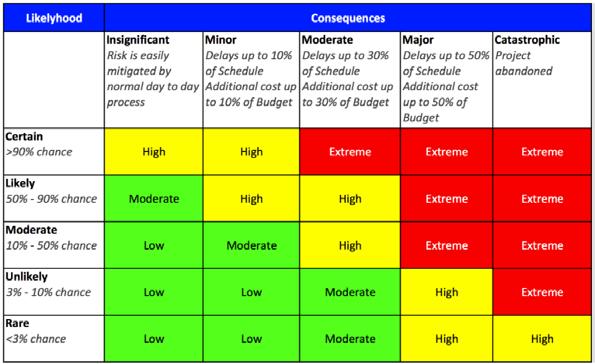
There are several standards and guides to help facilities, consultants, and others through the challenges of cybersecurity. The National Institute of Standards and Technology (NIST) has developed a framework that can be accessed
at www.nist.gov/cyberframework. It also has a specific publication for industrial controls systems (ICS), Special Publication 800-82; however, the second revision of this document was issued in May 2015 and the third revision is still in draft form. There are many other NIST standards covering information technology (IT) systems available.
The American Water Works Association (AWWA) has developed a cybersecurity guidance and acceptance tool (www.awwa.org/ResourcesTools/Resource-Topics/Risk-Resilience/ Cybersecurity-Guidance) that is very userfriendly and helps a facility or consultant stay in alignment with NIST and the 2018 American Water Infrastructure Act (AWIA). It evaluates a system by asking questions, determining the level of risk, and what portions of the system are the most vulnerable.
The Cybersecurity and Infrastructure Security Agency (CISA) offers free scanning and testing services to help reduce exposure to threats by taking a proactive approach to mitigating attack vectors. The results of the testing are kept confidential between the customer and CISA. It also offers a free cybersecurity evaluation tool (CSET) that provides a systematic, disciplined, and repeatable approach for evaluating an organization’s security posture.
The U.S. Environmental Protection Agency (EPA) has a cybersecurity incident action checklist for the water industry (www.epa.gov) that provides a list of items to prepare for, and what actions should be taken, in the event of a cyber incident.
On March 3, 2023, EPA released a regulatory guidance memorandum, EPA 817-B23001: Evaluating Cybersecurity During Public
Water System Sanitary Surveys, which states that all public water systems are to assess their cybersecurity resilience as part of their sanitary surveys. This directive was challenged in court by the states of Missouri, Arkansas, and Iowa and on July 12, 2023, it was temporary blocked by the Eighth U.S. Circuit Court of Appeals court in St. Louis. The National Rural Water Association, which intervened in the lawsuit challenging the EPA plan, alongside AWWA, said in a statement that it supports enhanced cybersecurity, but that the EPA plan would be too burdensome for small water systems.
Many activities are also ongoing within the industry to address cybersecurity in the ICS, operational technology (OT), or SCADA environment. The AWWA has a national committee on cybersecurity and is directly involved with the federal government to develop the inevitable security requirements. These requirements are likely going to be patterned after the power industry’s North American Electric Reliability Corporation Critical Infrastructure Protection (NERC CIP) standards.
The Florida Section of AWWA (FSAWWA) recently started its own cybersecurity committee to address state-specific items and provide education to the members. The AWIA requires the development of disaster recovery plans, which are a key component of cybersecurity, and this
24 September 2023 • Florida Water Resources Journal
FWRJ
Mike Stoup, P.E., is vice president and manager of the electrical/controls group at McKim & Creed in Clearwater. Robert (RJ) Burney is president of Overwatch OT in Sarasota.
Figure 1. Network logical graphs.
Table 1. Risk Matrix Results
act will likely be updated in the near future to include additional security requirements. Many municipalities are taking the situation seriously and have performed cybersecurity audits of their systems on their own and made modifications to them to improve their security profile.
Cybersecurity Audits
Cybersecurity audits can be brief, or they can be lengthy. The amount of investigation performed is directly proportional to how thoroughly the system is evaluated and how well the system is protected after the audit. A facility’s comfort level should be inversely proportional to the amount of investigation and mitigation that is performed.
A thorough cybersecurity audit will include the following:
S Network perimeter system review
S Network diagram architecture review
S Network audit to identify unknown or unnecessary hardware on the network
S Review of software installed on the system that is unauthorized
S Review of all security policies, such as passwords, authorized users, and portable drive policies
S Review of all firewall rules
S Review of remote access procedures and pathways
S SCADA, programmable logic controller (PLC), and communication hardware and software review
S Review of the current disaster recovery plan including backup and restore procedures
S Antivirus procedures
S Patch and update procedures
S Physical security risk assessments
S Active network monitoring
The techniques used to accomplish these tasks are a combination of field research, network “sniffing,” meetings, questions and answers with staff, and review of existing documentation. Employee involvement is a key component to the audit and, as was learned in kindergarten, honesty is the best policy.
The auditor is there to determine what is good and bad and help make the system more secure. This cannot be accomplished if an auditor doesn’t know the whole truth about the system. The field of cybersecurity changes very quickly so it’s important for the auditor to compare the findings with current trends and the latest information to ensure that the resulting recommendations are not outdated.
Audit Deliverable
The deliverable of a cybersecurity audit will be a report filled with information to identify the findings, and recommendations
to mitigate the issues and improve the system’s security posture. This report should be specific to the system evaluated, list actual findings, and recommend changes that will not only work, but can be implemented within the framework and limitations of the facility’s system.
Topics typically covered in the report include:
S An executive summary
S The findings from the field research, interviews, and document reviews
S Identification of risks, categorized into critical, high, medium, and low risk
S Analysis of the risks
S Recommendations, prioritized by risk
S List of projects to improve the security of the system
Often the report will include a list of all the devices on the networks, with their manufacturer, name, type, internet protocol (IP) address, and media access control (MAC) address. This report can be very valuable, as a record of devices, to determine what is on the network that shouldn’t be, and is also a requirement to improve the networks moving forward with planning, change management, and replacement. Network logical graphs (Figure 1) are also useful tools to help identify which devices are communicating and with whom.
A risk analysis should be presented detailing the identified risks, their probability of occurring, and the consequences of the event. A Likelihood of Failure (LoF) and Consequence of Failure (CoF) score can be generated for each major component of the system and then their resulting risk can be calculated by multiplying LoF and CoF. Examples of LoF conditions are power, flood, communications, software, hardware, and cyberattacks; examples of CoF results are financial, downtime, and environmental impacts. Using a ranking of 1 to 5 for each, the risk matrix results are shown in Table 1.
By assigning each major component a risk score, concentration can be directed to correcting the most critical issues first.
Finally, a list of projects, prioritized by risk, should be provided. This list will be the roadmap that the facility will follow to address the items discovered in the audit and thus improve the system’s security profile. Each project will include a high-level scope, estimated budget, and estimated timeline for completion. These budgets can be used by the facility for a capital improvement plan (CIP) or funding requests.
Audit Strategies
Cybersecurity audits can be expensive and take time. Proper review of the items listed previously, especially where there are multiple networks across multiple facilities, can take months to research and document. This effort
can also be costly, and in this age of doing more with less, it’s likely not included in a CIP that was developed even five years ago. This cost and time to completion can present a problem if the municipality has serious vulnerabilities or is short of funding.
A strategy that has been deployed multiple times is a two-phased approach. Phase 1 identifies all the critical issues quickly, usually within 30 days of network time protocol (NTP), so the client can address them first and essentially stop
Continued on page 26
ACCESS TO HUMAN RIGHT
CLEAN WATER IS A
Florida Water Resources Journal • September 2023 25
At McKim & Creed, we engineer and protect our nation's vital water and wastewater infrastructure to provide communities with access to clean water because we believe that access to clean water is a human right.
#PeopleHelpingPeople
the dam from leaking. Phase 2 is a more-indepth analysis to dive deeper into the networks, policies, and procedures to identify less-critical areas of improvement.
The breakdown of what is addressed in Phase 1 and what is addressed in Phase 2 is client-specific, but generally the approach is as follows:
Phase 1: Critical Item Identification
S Network perimeter system review
S Network review to identify cybersecurity weaknesses
S Review of modems, including remote site modems and wireless connections, for weaknesses
S Network and diagram architecture review
S Remote access procedures and pathways review
Phase 2: Longer-Term Item Identification
S Review any recent cybersecurity audits and identify the status of the recommendations
S Perform network assessments on the SCADA and enterprise network using the information received in Phase 1 as a starting point
S Review the current disaster recovery plan, including backup and restore procedures
S Review the current remote station communications hardware and protocol to determine intrusion risks
S Prepare a roadmap to maturity to guide the organization toward a high level of security maturity
Typical Audit Findings
Experiences doing cybersecurity audits in the water industry have resulted in the following findings:
S Missing or insufficient network separation from the enterprise network to the OT network
S Networks that are not segmented sufficiently
S Wireless networks that are not secure
S Unsecure remote access paths
S Missing or insufficient disaster recovery plan
S Missing or incomplete inventory of the devices on the networks
S Outdated backups of programs, data, and documentation
S Outdated operating system (OS) software or updates that haven’t been applied
S Outdated SCADA software or updates that haven’t been applied
S Password policies that are missing or insufficient
S Hardware on the network that is unused or unidentified, but still active
Implementing Changes
Much like a master plan, the recommendations in the audit report will need to be funded and executed to improve the system. Typical recommendations will result in the development of the following OT items:
S Removable media policy
S Change management program
S Contractor laptop policy
S Access control policy
S Acceptable use policy
S Remote access policy and procedure
S Communication policy
S Business continuity policy
S Disaster recovery program
S Incident response plan
S Configuration management policy
S Information security policy
S Security education, training, and awareness program
S Password reuse and password requirements
S Onboarding and offboarding policies
S Security monitoring policy
S Vulnerability management policy
S Physical security control policy
S Operator workstation use policies
S Universal serial bus (USB) use policy
S Contractor access policy and procedure
It takes time to define clear success factors for well-written governance. Some of the items required to ensure that the governance is correct, digestible for the reader, effective, and sustainable include:
S Anchored in the consequences of compromise within the IT/OT ecosystem
S Undeniable scope and language use, with line-of-sight to what and whom it applies
S Rightsized for the complexity of the organization and business risks
S Details and documents data classifications commensurate with the best practices
S Emphasized regulatory requirements and the mandatory controls to support the authority having jurisdiction (AHJ), when applicable
S Meeting the intent of published industry standards and recognized and generally accepted good engineering practices (RAGAGEP)
S Clearly defined roles and responsibilities relevant to employees, contractors, vendors, and product suppliers
S References for security technologies and the 24/7/365 operations and maintenance required for IT/OT systems and assets
S Easy, fundamental, and clear to communicate
S Ensure the governance has the following attributes: adaptable, should contain a process for deviations, establish periodic
reviews, and can be incorporated into learning systems
S Enable the document content to have a method for compliance (i.e., auditable/metrics/key performance indicators to drive accountability)
S Effective delivery and continuously learningenabled
S Easy to digest for both subject matter experts and practitioners
Additionally, the redesign and reconfiguration of the OT network may be required to install a demilitarized zone (DMZ), Windows update server, multifactor authentication, and security monitoring.
State Revolving Funds
Cybersecurity is a strong focus of the current administration and to help municipalities harden their systems the federal government has made money available for audits and modifications. Through the Infrastructure Law: Environmental Protection Agency 2022 State Revolving Fund (SRF), the Clean Water State Revolving Fund (CWSRF) has allocated $60,572,000 for the state of Florida, and cybersecurity is an approved use of these funds.
The Future
Cybersecurity is taking a much higher priority in the long-term planning and daily maintenance of SCADA systems. All systems should now be designed with cybersecurity as the highest priority, using techniques, such as network segmentation, two-factor authentication, and DMZs, to protect the systems. Implementing and then reinforcing a strong cybersecurity culture is a key step to reducing risks.
Humans are often cited as the weakest link in cybersecurity. According to Cybint, a global cyber education company, 95 percent of cyberattacks are possibly due to human error.
One particular challenge for municipalities will be the control of information and the selection of what should be made public. Obvious data, such as IP addresses, usernames, and passwords, should never be made public, and more and more care should be taken to ensure that they aren’t.
A request for quote (RFQ) documentation that shares system network architectures or makes and models of SCADA hardware and software should be controlled. Similarly, operational parameters and process control narratives are great ways for attackers to learn how to disrupt the normal operation of the facility.
Great care should also go into deciding what is released in RFQ or request for proposal (RFP) packages and how it’s accessible via internet sites or otherwise shared. S
26 September 2023 • Florida Water Resources Journal
Continued from page 25


The Confluence of Emerging Issues
Suzanne Mechler President, FWEA
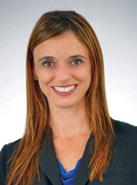
The Water Environment Federation (WEF), and FWEA, as the member association, are committed to increasing awareness of the impact and value of water. When you think about water, there are so many
varying topics that come to mind: water quality, water quantity, water safety, water scarcity, water security, etc. The new strategic plan from WEF imagines life free of water challenges.
Emerging Issues
In this column, I will hit on the latest emerging issues, the confluence of those issues, and sometimes the contradictory directions to manage and respond to these challenges.
Nutrients in the Watershed Summer is almost over, but it’s still
hot! Extreme summer temperatures lead to increasing surface water temperatures, and when combined with too many nutrients entering our waterbodies, it can cause eutrophication and subsequently harmful algal blooms (HABs). These HABs, including red tide and blue-green algae, have adverse impacts on aquatic life, causing problems in recreational, food, and drinking water sources.
As water is the soul of Florida, these impacts require attention, engineering excellence, and a coordinated effort to resolve. Throughout the state, there have been significant advancements in nutrient removal processes and technologies, and in the reduction of nutrients entering water bodies from regulated sources, such as water reclamation facilities (WRFs) or water resource recovery facilities (WRRFs).
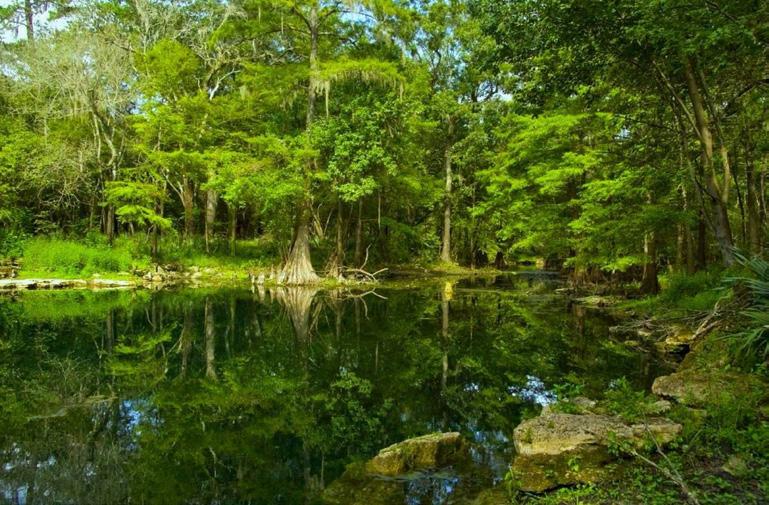
Water Reclamation Facilities and Resource Recovery

Natural resources are limited, and their recovery is essential to healthy, sustainable communities. In 2013, 10 years ago now, WEF made the terminology change from wastewater treatment plants and WRFs to WRRFs, with the intent to provide sustainable management for resources such as energy (renewable natural gas), carbon, phosphorus, and nitrogen. Resource recovery options also include indirect and direct potable reuse.
The state’s legislation and regulation development from the Florida Department of Environmental Protection will drive municipalities toward reuse in the future. The recovery of nutrients, however, is an issue that offers an opportunity to generate such valuable products as struvite, ammonia, and other fertilizers, but it’s not talked about very often. Regulated sources, such as WRRFs, have historically carried most of the burden for reducing nutrients that enter waterbodies and require process and technical advancements to reduce nutrients loads. At the same time, these WRRFs offer valuable resources that we are not taking advantage of.
Cyberattack Resilience
In March, the U.S. Environmental Protection Agency issued a memorandum entitled “Evaluating Cybersecurity During Public Water System Sanitary Surveys” that calls attention to the growing threat of cyberattacks and requires states to audit cybersecurity best practices at public water systems through
28 September 2023 • Florida Water Resources Journal
FWEA FOCUS
existing processes. While the Eighth Circuit Court of Appeals has stayed the implementation of the interpretive rule pending the outcome of litigation, facilities are recognizing the need to incorporate better practices with people and processes.
Despite the growing awareness of cybersecurity issues, implementing new security protocols remains a complex task. The average cost of a data breach is $3.86 million, according

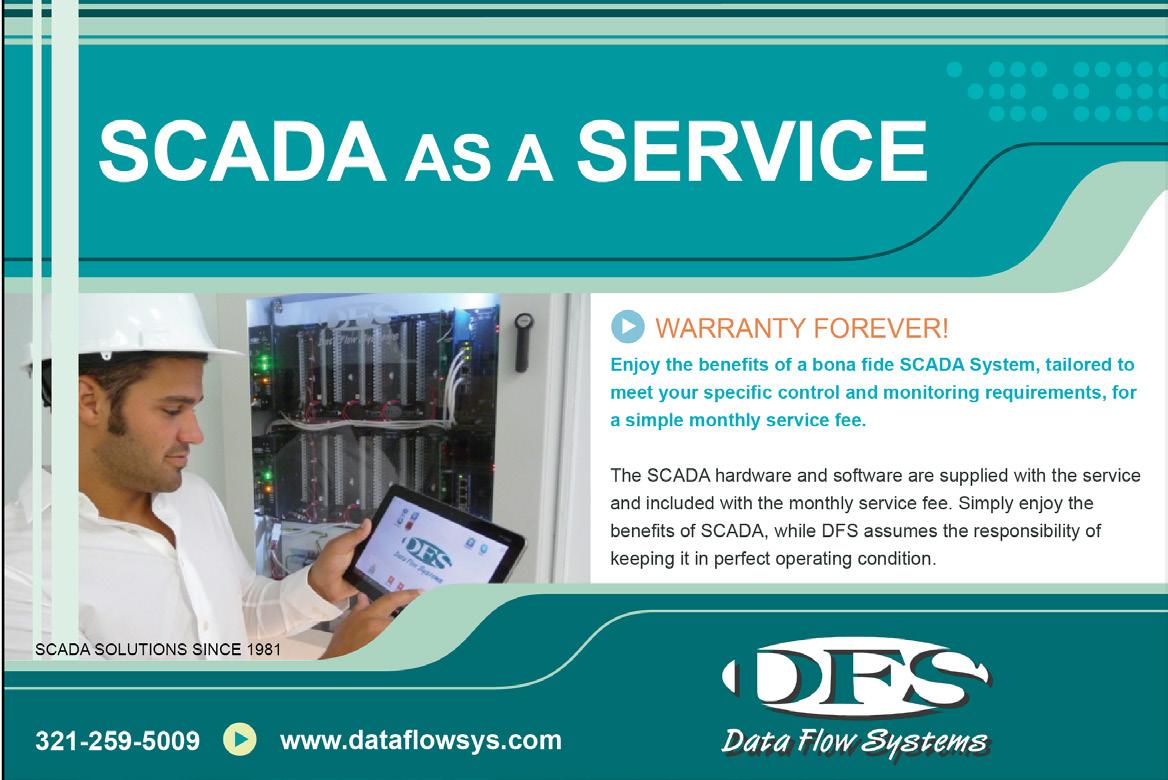
to a 2020 IBM research report, with an average of 280 days recovery time after a cyberattack. This new emerging issue requires utilities to coordinate with their information technology departments, hire and/or train staff, and develop procedures and programs to defend against these attacks.
Addressing These Emerging Issues
So let’s get this straight. . .
We are continuing to reduce the point discharges of nutrients, but many sources, such as runoff from agricultural fields and stormwater runoff from urban and suburban developments, remain significant contributors to nutrient pollution in waterbodies.
As I stated in my last column, FWEA has added a new committee this year, the Intelligent Water Technology Committee. We will be initiating a webinar series to help solve some of these emerging issues with the application of intelligent systems.

If you’re interested in participating in these webinars, please reach out to me at mechlerse@ cdmsmith.com or Tim Ware, our director at large, at tim.ware@arcadis.com.
In addition, WEF has announced the Intelligent Water Systems Challenge to encourage participants to use innovation and data to help solve some of the most difficult issues faced by the water industry. The goal is to demonstrate the value of intelligent water systems to utilities and foster the adoption of smart water technologies, as well as give you all the opportunity to highlight your talents and innovation with a focus on leveraging data to help utilities make better decisions.
The 2023 Intelligent Water Systems Challenge will run until Oct. 2, 2023. For more information go to www.wef.org. S
Florida Water Resources Journal • September 2023 29
Work title and years of service.
I’m currently a utility engineer for the Village of Wellington and have worked there for over five years. I worked for Palm Beach County Water Utilities for 13 years prior to that.

What does your job entail?
My primary responsibility is to work with developer engineers and property owners in plan review and inspection of developer projects within the Village. I coordinate with our teams to ensure our services are delivered to our residents in a timely manner. I also oversee various capital projects at our water and wastewater facilities.
My job responsibilities additionally entail working within our existing systems to solve critical problems that could affect the processes to deliver and transmit water and wastewater throughout the Village.
What education and training have you had?
I currently possess a bachelor of science degree in civil engineering and a
master of science degree in water resources and environmental engineering, both from Florida Atlantic University (FAU) in Boca Raton. As I was not always an engineer, I have also attended electrical apprenticeship schools and other various construction-related trainings over the years. Currently I possess electrical plan review and inspector licenses with the state of Florida and currently assist the Village of Palm Springs in plan review and inspection tasks. I’m also a licensed journeyman electrician.
What do you like best about your job?
The best part of working for the Village of Wellington is having the opportunity to provide services to the public and ensure they have the best drinking water available using the latest technology. I also enjoy the interaction with the residents and assisting them in responding to all of their inquiries and assisting with their projects by verifying the project folio is complete for the contractor to build.
What professional organizations do you belong to?
I currently serve as treasurer of Region 6 of the Florida Section of AWWA. I’m also a member of American Society of Civil Engineers, Florida Engineering Society, Southeast Desalting Association, and Southeast Florida Utility Council.
How have the organizations helped your career?
While I was attending FAU, our professor, Fredrick Bloetscher, Ph.D., P.E., encouraged all of us to network with various organizations. As I was already working in the water industry, I gravitated toward AWWA. I attended a number of networking events held by Region 6 during my time at FAU and was the founding president of the FAU chapter of AWWA. The AWWA helped me establish multiple contacts with engineers, contractors, vendors, and many other experts in the water industry.
Through these contacts, I have the ability to reach out to a large group of people if I ever find myself in a quandary as to how to solve a problem. Through
the organization of the FAU chapter, I made connections that will help me throughout my career. Whenever I speak to students interested in any industry I advise them to always seek our professionals in their chosen field of work and make connections with them. The knowledge that can be gleaned from these individuals and groups is invaluable to their future and continued success.
What do you like best about the industry?

I enjoy the challenges of the future. The industry is in a time of emerging concerns that will take folks working together to solve. Working in a field that is typically not the same thing day in and day out keeps things interesting and allows me to learn new approaches to problem solving. I can also absorb knowledge, and in turn, use that knowledge to keep the water we drink safe for generations to come.
What do you do when you’re not working?
I have many extracurricular activities that I enjoy when I’m not working. Many of them involve being in the woods, either hiking or mountain biking. I brought two sons and one daughter through the Boy Scouts program and was very active in multiple programs within the scouting organization.
I’m the president of the Florida Indian Heritage Association. We host two Native American Powwow dances in St. Lucie and Indian River County every year, one of which boasts of being Florida’s longest continuously running powwow, celebrating its 58th year in 2024.
I’m an active member in the Knights of Columbus, currently serving as the Florida State Council webmaster, and am the district deputy for our councils in Northern Palm Beach County.
I’m also an avid Geocacher and have been an extra class amateur radio operator for over 25 years. S

30 September 2023 • Florida Water Resources Journal
Richard J. Gallant Village of Wellington
FWRJ READER PROFILE

Training the New Generation of Advanced Water Treatment Operators
Steve Soltau

As access to easily treatable drinking water supplies becomes more and more difficult and regulators continue to implement new laws restricting discharge limits for wastewater quality and quantity, scientists and engineers are driven to research cutting-edge technologies that provide increasingly high-tech and innovative water treatment strategies.
The past three decades have seen dramatic growth in the development and commercialization of these technologies that are designed to improve water quality and comply with tightening federal regulations.
Diversification of drinking water supplies through potable reuse is creating a shift beyond conventional treatment. The future of water treatment appears to be “closed systems” that make use of advanced, multiple-barrier approaches, exampled by the increasing number of pilot plants that are being installed and operated throughout the state of Florida.
At this time, textbook learning and assessment of innovative treatment techniques are not required by many states as part of the operator licensing examinations, increasing the gap between classroom and practical knowledge. It would appear that the obligation to train the workforce will be the responsibility of the employer.
This article will hopefully spark discussions within organizations about the need to identify, locate, and budget for the
training their staff will need to operate and maintain all the “gadgets and thingamajigs” being proposed for 21st century “One Water” treatment plants.
Water Treatment Today
According to an essay from the Water Research Foundation (WRF):
“The changing landscape of constituents of emerging concern, pathogens, and disinfection byproducts in drinking water, as well as increasingly restrictive discharge limits for receiving waters and the need to offset the demand on traditional potable water supplies by making less-pristine water sources economically feasible to treat, have necessitated a shift beyond conventional treatment.”
To help water and wastewater utilities choose the best path for implementing potable reuse, WRF funded Project 4833, “Impact of Wastewater Treatment Performance on Advanced Water Treatment Processes and Finished Water Quality” (www.waterrf.org).
Partnering with Carollo Engineers, this project developed “a set of practical tools, including a cause-and-effect database, a decision support flow chart, and case study documents” (Figure 1).
The report also states:
“Advanced treatment strategies go beyond traditional treatment processes, such as the typical treatment train of coagulation, flocculation, and filtration used by drinking water utilities or the preliminary, primary, and secondary treatment used by wastewater

utilities. Advanced strategies take treatment to a higher level.
Technologies such as carbon adsorption, membrane treatment, ozone, ultraviolet disinfection, biofiltration, or a combination of these solutions are now being explored by water plants. Similar advanced treatment strategies have also been added to water resource recovery facilities to further remove pathogens, salts, nutrients, organic compounds, and other pollutants—often with the goal of producing potable water through indirect or direct potable reuse.”
What Operators Now Face
“These more-complex systems require the treatment plant operator to understand the entire system as a whole,” said Pam LondonExner, MPH, senior water quality scientist at Juturna Consulting. “A treatment plant operator now needs to be a chemist, biologist, engineer, and mechanic of sorts to do the work, as well as being versed in computer technology. The days of an operator understanding just a sand filter and a chlorine pump are gone.”
A partial list of emerging technologies and strategies for water treatment is shown in Table 1.
Workforce Issues
The transition from pilot plants to full-scale operations is on the horizon and employers have reached a “tipping point” where the skill levels of their operations staff no longer match the requirements of the technology.
It’s time to look for answers to some important workforce questions:
S Who can provide operator training on these treatment technologies?
S What would be a good example of a training syllabus?
S Where can hands-on experience with this equipment be obtained?
S When should an organization start training its staff?
S Why are new skill sets necessary to operate and maintain these advanced treatment processes?
S How can an employer ensure the student is proficient in what was learned?
S How is this going to be paid for?
32 September 2023 • Florida Water Resources Journal
Figure 1. Cover of the report for WRF Project 4833, “Impact of Wastewater Treatment Performance on Advanced Water Treatment Processes and Finished Water Quality.”
Continued on page 34



Complete Visibility in Full Wastewater Tanks SediVision®️ technology delivers unprecedented high-resolution image mapping of full wastewater tanks. Eliminate probing. Know with accuracy, where and how much material is under dark water. 844-765-7866 ©️2022 USST HOLDINGS, LLC ussubmergent.com sedivision.com
Continued from page 32
Who Can Provide Training on These Treatment Technologies?
Professional Industry Industries have the resources to provide the appropriate training and the experts to guide the training without a “sales pitch.” Industry tends to focus on being a business (bottom line) and this is a great opportunity to further the education of workers.
“Many of these industries have the ability to make contact with individuals who have
extensive experience using the equipment or technology who would be willing to share their intrinsic expertise at workshops and seminars by bringing in vendors to present their new technologies, compare and contrast them, and have open discussions with end users,” said Ivy Drexler, senior water resources managerwastewater, with the City of St. Petersburg. “These opportunities would also “provide market feedback to investors and developers interested in innovative water treatment opportunities.”
Learning Centers
At learning centers, similar to The
Treatment Technologies
• Chemical stabilization
• Iron and manganese removal
• Advanced oxidation
• Ultraviolet disinfection
• Alternative disinfection
• Advanced treatment strategies to further remove pathogens, salts, nutrients, organic compounds, and other pollutants
Membrane Technologies
• Reverse osmosis (RO)
• Microfiltration (MF)
• Ultrafiltration (UF)
• Nanofiltration (NF)
• Brackish water reverse osmosis (BWRO)
• Seawater reverse osmosis (SWRO)
• Double-pass reverse osmosis (DPRO)
• High-recovery RO (conventional, HERO®, Closed-Circuit Desalination™)
• Electrodialysis reversal (EDR)
High-Purity Water Treatment Technologies
• Ion exchange (IX)
• Electrodeionization (EDI)
• EDI high-purity water treatment
• Distillation (multi-effect, vapor compression)
• Ultraviolet (UV) irradiation
Emerging Membrane Technologies
• Membrane distillation
• Membrane capacitive deionization
• Membrane bioreactors
• Forward osmosis
• Ceramic filtration
Machine Learning, Artificial Intelligence, and Robotics
• Massive data streams, sensors, and other instruments designed to make predications will need to be managed.
• Andrew Salveson, water reuse chief technologist, disinfection chief technologist, and project manager with Carollo Engineers in California, believes this new technology is making a valuable breakthrough into water treatment process control.
o “We expect greater confidence in online monitoring systems as we provide less false positives and gain overall greater confidence in water quality monitoring and control from automated systems.” Will robots replace operators?
o “This technology will allow less staffing, such as 24/7, but I fully expect—and frankly want—to have significant well-trained operations staff turning the dials and verifying performance.”
Water Tower located in Buford, Ga. (www. theh2otower.org), participants are guided through multiday seminars to observe testing and validation of emerging technologies in real time. Active demonstration space is utilized to visually display results to students, end users, and other technical enthusiasts who all agree to pay to take these seminars. This global nonprofit’s mission is to tackle water treatment’s greatest challenges by bringing together the public and private sectors of the industry, side by side with academia, students, and nonprofits.
A similar training model is used at the Arizona Center for Algae Technology and Innovation, known as AzCATI (www.asu. edu), with the goal to provide state-of-theart learning and educational environments and opportunities for training the next generation of scientists and engineers for the biotechnology workforce. At AzCATI, algaebased technology developers can test their equipment onsite and in front of an audience of potential collaborators and end users.
Manufacturers and Developers of the Technologies
“Manufacturers can tell us how the technology works and developers use practical knowledge to apply and grow the technology,” said Julie Nemeth-Harn, P.E., membrane system designer for more than 30 years and vice president of Komline, the oldest company in the membrane treatment industry. “Membrane and component manufacturers focus on the success of their equipment and developers understand their equipment better than anyone. As a group, they are thoroughly knowledgeable of the appropriate ways to operate and maintain their equipment.”
Other innovative training opportunities include organized manufacturer workshops and trade shows utilizing subject matter experts, visual processes, and onsite technologies similar to those listed earlier.
Professional Trainers
Specialized instruction and training in advanced water treatment technologies is difficult to find. Professional trainers, such as David H. Paul Inc., RO Water Treatment Training and Consulting (www. dhptraining.com), can provide instruction and certification on operation, control, monitoring, and maintenance of RO membrane systems. The organization also provides training for emerging technologies, including typical high-purity loops, such as UV light, distillation, degasification, MF, UF, IX, and EDI.
34 September 2023 • Florida Water Resources Journal
Table 1. Emerging Technologies and Strategies for Water Treatment
The Southeast Desalting Association, American Membrane Technology Association, Florida Rural Water Association, American Water Works Association (AWWA), Sacramento State University, and many operator-focused organizations also provide this niche training that can be customized and provided locally.
The Florida Water and Pollution Control Operators Association (FWPCOA) is currently creating reuse water treatment study materials and looking at opportunities to leverage materials from other resources, including other states and water-related organizations.
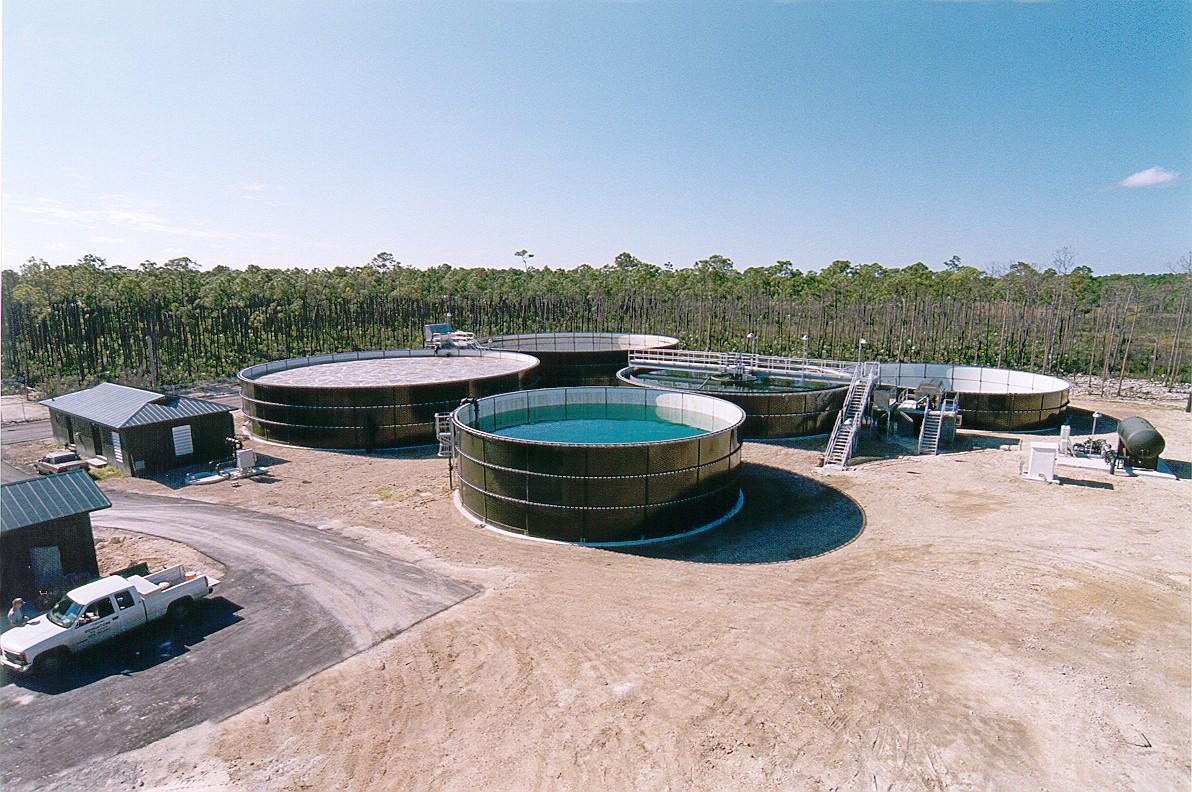
Schools
There are many technical-oriented high schools and colleges currently teaching drinking water and wastewater courses that guide their students toward trades and apprenticeships. Curriculum in advanced water treatment technologies can be developed in concert with water treatment professionals and folded into the syllabus of these technical programs.

The water resources management program at Florida Gateway College (FGC) in
Lake City offers a bachelor of applied science in water resources management and a collegecredit certificate as a water quality technician. As an incentive to educate the workforce, students with active water or wastewater licenses may transfer real-life experiential learning for college credit (www.fgc.edu).
What Would be a Good Example of a Training Syllabus?
An example of a syllabus outline could look like this:
S Introduction (to the technology/ methodology)
S What problem the technology is solving
• How the technology solves it theoretically
• How it solves it practically
S What the technology can and cannot do
S History/background of the technology/ methodology
S Process overview
• Detailed description of how the equipment/technology/methodology works
• Understanding the components of the equipment
• Where it fits into the process flow
• What ancillary knowledge/equipment is required
S Installation and start-up of the system
S Equipment and construction challenges
S Daily operations
• Process control
S Equipment troubleshooting, repair, and calibrations

S Quality assurance/quality control
S Cleaning and shutdown for downtime and repairs procedures
S Hands-on practice
• Setup and use of the equipment, technology, and methodology
• Students test the products and compare various criteria, i.e., accuracy and ease of use
S Visual simulations
S Group discussions
• Compare technologies that accomplish similar things, yet use different techniques
• What it takes to make the process successful long term
• Sharing of intrinsic knowledge by subject matter experts
S Examination and/or certification
Continued on page 36
Florida Water Resources Journal • September 2023 35
Continued from page 35
Visual learning techniques are vital to exposing students to actual operating conditions, allowing them “to see what proper operation looks like” believes Nancy Brooking, design project manager III, who spends most of her working hours planning future water and sewer infrastructure projects with Sarasota County Florida Capital Projects Department. The biggest advantage of these visual simulations “is inclusion of equipment failures to provide the students with the opportunity to learn and perform preventative and corrective maintenance tasks before the equipment is deployed,” said Brooking.
Side streams of treatment facilities constructed specifically for reuse water treatment scenarios can be used as training tools for facility staff. Brooking said that “under these controlled circumstances, real-life situations can be staged to allow staff to see what various issues will present themselves. This will allow staff to respond to occurrences, such as upsets and equipment failures, without actual permit violations taking place.”
Ideal training locations could include a pilot plant or a facility developed for this purpose. The ability to take apart and reassemble the equipment, a wet lab for water analysis, and communication electronics will all enhance the learning experience.
Where Can Hands-On Experience With This Equipment be Obtained?
Working at existing installations and pilot plants to get eyes on the equipment and talking with the experienced operators working there can be one of the best opportunities for obtaining hands-on experience. “The downside to this idea is that there are few existing facilities using these emerging technologies in the United States; many are overseas,” said Nemeth-Harn.
Dick Youmans, CWT, reverse osmosis specialist IV, vice president of onsite sales, and an instructor, said, “Only by working in the industry can someone obtain true hands-on experience.” Specialized hands-on seminars and other training directed at advanced water treatment taught by subject matter experts, such as David H. Paul Inc., can also provide the hands-on training so necessary for operation of these facilities.
Trade schools, colleges, and university programs with access to the equipment can also provide internships, apprenticeships, and academy programs, giving students the opportunity to assist in hands-on research. Onsite tours to pilot projects and plant
modifications allow for viewing of the many treatment alternatives, while spending some quality one-on-one time with experienced operators.
The U.S. Environmental Protection Agency (EPA), in coordination with AWWA, has compiled a list of available advance water treatment and water reuse training opportunities in its water reuse action plan, with the goal to “support and promote opportunities for creating a skilled workforce.” The list may not be fully comprehensive, but does include U.S. and international training opportunities
When Should an Employer Start Training Staff?
“Identify and budget for specialized training as part of the study phase and schedule the training primarily during the pilot phase,” says Nemeth-Harn. “Training too soon may result in learning about technology that may not be selected for the plant or there may be severe loss of training knowledge due to not using the equipment.”
“Training should continue during the construction phase of the project, well before commissioning of the equipment by the original manufacturer,” recommends Youmans.
London-Exner believes training new hires at a plant utilizing advanced treatment technology “is an opportunity for all operations staff to be trained using an internship-type approach where the new hire is matched with an experience staff member as a mentor. As proficiency is reached, the new hires can be ‘graded’ before being left to operate the facility on their own.”
One caution here: Leadership can lose credibility with staff by training for equipment and processes that are never purchased.
Why Are New Skill Sets Necessary to Operate and Maintain These Advanced Treatment Processes?
Today’s workforce likely won’t have knowledge of the new equipment, new theory, and new chemistry that make up advanced, multiple-barrier approaches to water treatment. The numerous processes involved are not “one size fits all” so procedures will require flexibility and a higher level of understanding. For example, different criteria for “reject water” at the completion of each treatment phase requires that quality control skills become paramount.
Working with emerging technologies will also require an added level of comfort with chemical terminology and expertise. “Something as simple as working with a new
coagulant will require a new way of thinking about what is normal due to changes in how that coagulant reacts with water,” said London-Exner.
Significant understanding of maintenance and programming of instrumentation will be necessary. This type of work will require either additional specialized training or the use of contract labor to manage the technology and process.
All staff will need to be comfortable working with portable wireless devices, including the expanding world of the Internet of Things (IoT), which is the interconnection via the internet of computing devices embedded in everyday objects, enabling them to send and receive data that enable equipment to interact with little human intervention by collecting and exchanging data via a network.
Brooking said, “‘That’s how we always ran the plant’ won’t work any longer. What works well at a secondary treatment facility will not result in compliance at an extended aeration facility, and what works well at a tricking filter plant will not work at an advanced treatment plant. It’s analogous to a Ford-trained mechanic trying to successfully work on a Ferrari.”
New safety and workplace-awareness skills will be required due to the unusual assortment of equipment that makes use of higher pressures, unique chemical combinations, and electrical dangers.
Broader “soft skills” will be also required. Drexler believes “training will focus on developing an employee’s aptitude for systems thinking, holistic perspectives, critical thinking, root-cause analysis, data analysis, and oral and written communication.”
Engineers and planners will need to build on the skills of collaboration and inclusion when developing new treatment plants. No longer can they sit in a closed room and create their masterpieces. “Allowing frontline treatment plant staff to have a say in decision making before and during the study and pilot stages, then listening to their input, will result in a better-operated and more-user-friendly facility,” advises Brooking.
How Can an Employer Ensure the Student is Proficient in What Was Learned?
While real-life situations are the best examples of experience, a combination of hands-on exercises and technical questions can help determine if a student has the level of understanding and skill required to operate an advanced water treatment facility.
Apprenticeship programs and certifications guarantee an employer that all students have been trained the same way,
Continued on page 38
36 September 2023 • Florida Water Resources Journal
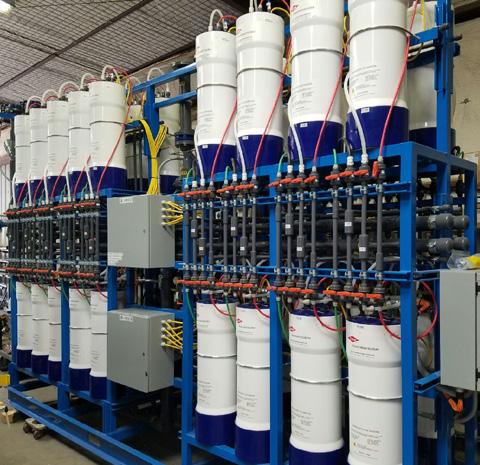






Florida Water Resources Journal • September 2023 37
Photos of Advanced Water Treatment Equipment
Electrodeionization.
Membrane bioreactors.
Ceramic filtration.
Ultraviolet light disinfection.
Electrodialysis reversal at the Sarasota County Utilities Carlton Water Treatment Plant.
The Plant City potable reuse membrane filtration pilot and reverse osmosis pilot will use treated effluent from the Plant City Water Reclamation Facility for potable reuse purposes.
Continued from page 36
learned the same knowledge, and obtained the same proficiencies in a controlled, repeatable environment. Certain colleges, manufacturers, and industry organizations offer certifications, degrees, and continuing education credits that can also demonstrate an employee’s expertise.
To demonstrate their proficiency, treatment plant operators in California are able to obtain an additional certification as an advanced treatment operator from the California Water Environment Association (www.cwea.org). Similar endorsements could be developed in other states.
Nemeth-Harn reminds us that partnering “with the local state licensing authority to develop an approved curriculum and testing process would be vital to any success of operator licensing and certification adjustments or additions.”
Utility leadership can also take the initiative by joining together with their human resources departments to develop career ladder criteria aimed at rewarding proof of specific technology and equipment knowledge and then regularly engage those employees in field and proficiency testing.
Proficiency Measures
Brooking provided several topics regarding proficiency and management oversight for employers to analyze:
S Emergencies
• When things go south, how does the staff respond?
• The answers will prove whether or not the skills have been retained.
S Operations and process control
• How interested the staff is with running the plant properly–or not–will be clear.
• Just because the effluent leaving the facility looks clean does not mean it is.
• Falsifying data will be found out. Water quality will prove-out false data.
S Rewards and consequences
• Staff that embraces the new equipment and technologies should be recognized.
• Recognition should be approached with careful consideration toward coaching and performance reviews so others that refuse to adapt cannot claim they are being treated unfairly.
If resistance to applying what was learned is prevalent, all the money spent on the equipment will be wasted.
Ideas for incentives include promotions, out-of-town training, and attending conferences.
How is This Going to be Paid For?
Training is expensive. Training budget
requests will not flatline and increases will shock the accountants. New equipment training expenses could be stipulated as part of capital purchases and all ongoing equipment operation and maintenance training can be built into annual maintenance contracts.
Training Centers
“Professional industries and equipment manufacturers could step up and supplement the costs to create formal training facilities,” London-Exner said. “Organizations similar to the University of Florida’s Training Research and Education for Environmental Occupations (TREEO) in Gainesville are first-rate examples to follow” (www.treeo.ufl.edu).
Another example of a formal training facility created and pioneered by locally supported resources is the Washington Environmental Training Center located in Auburn, Wash. There is also the Seattle-based Water and Wastewater Training (WETRC), a nonprofit training organization supported by the state’s university system and founded in 1974 under the direction of EPA. Located on the Green River College Campus, WETRC provides affordable, specialized training and continuing education for the water and wastewater workforce.
Both of these successful training centers offer consistency and quality validated by regulatory agency oversite. With enough local support and diligence these centers can be replicated in any community.
Grants Available to Small Systems
Federal grants to pay the registration fees for training to operate and maintain these critical systems are available. The EPA Office of Water provides a variety of funding programs to public water systems combining a range of financial resources, including grants, to support enhancing the quality of drinking water and improving public health.
Funding through the EPA small systems program is designed to provide training and technical assistance to small public water systems, small wastewater systems, and private well owners located in urban and rural communities throughout the U.S. and its territories.
The National Rural Water Association also provides training and onsite technical assistance that supports the specific needs of small water system personnel, tribal systems, and overburdened systems.
Conclusion
As with all technology, the dramatic evolution of advanced water treatment has outpaced the expertise of the workforce. It’s my hope that this article has focused
a spotlight on the gap between the timehonored skills required of today’s treatment plant operators and the advanced skills essential to operate and maintain 21st century “One Water” treatment plants.
It will be the responsibility of the employer to budget, identify, locate, and provide this specialized training. So, I ask: Are you ready?
Sources
S Julie Nemeth-Harn, P.E.
• Process engineer, membrane system designer, vice president, Komline-Harn
• www.harnrosystems.com
S Yvonne Picard, P.E.
• process mechanical engineer and project manager, Atkins
• www.atkinsglobal.com
S Pam London-Exner, MPH
• senior water quality scientist, Juturna Consulting
• Juturna Consulting LLC, 10549 N. Florida Ave., Ste. K, Tampa, FL 33612
S Ivy Drexler, Ph.D.
• senior water resources manager-wastewater, City of St. Petersburg
• www.stpete.org
S Dick Youmans, CWT
• reverse osmosis specialist IV, vice president of onsite sales, instructor
• David H. Paul Inc., RO Water Treatment Training and Consulting
• www.dhptraining.com
S Nancy Brooking, design project manager III
• Sarasota County Florida Capital Projects Department
• Capital Projects, Sarasota County
• swww.scgov.net
Additional Resources
S A Selection of Training Programs for Water and Wastewater Operators (www. epa.gov)
S (22) Machine Learning in Utilities and Water Industry: Making Digital Ripples, LinkedIn
S Microsoft Word - CUWA Potable Reuse Operator Certification White Paper_ FINAL_UPDATED 02.21.16.docx (www. squarespace.com)
Steve Soltau is owner of H2O-KnowledgePro providing workforce coaching and process control troubleshooting and is an instructor for the Florida Rural Water Association drinking water apprenticeship program. He can be reached at ssoltau55@gmail.com. S
38 September 2023 • Florida Water Resources Journal
CALL FOR PAPERS
The FWRC technical program provides many opportunities to share your environmental knowledge and solutions to water and wastewater professionals at the 2024 Florida Water Resources Conference. Join industry professionals dedicated to improving and sustaining Florida's waters.


Submit your abstract for consideration as a session, workshop or roundtable discussion.
Submit by 10.1.2023
Notifications by 11.30.2023
EXHIBITORS AND SPONSORS
Registration will open in September for 2024 booths and sponsorships .
www.fwrc.org
Florida Water Resources Journal • September 2023
APRIL
APRIL
2024 EXHIBIT HALL OPEN APRIL 2 - 4
GAYLORD PALMS KISSIMMEE, FLORIDA
2 -
6,
2023 Florida Water Resources Conference Panel Recap: How to Increase Qualified Proposers
Amanda Guillory
Another successful Florida Water Resources Conference (FWRC) is on the books, and the Contractors Council is excited to have been involved and able to host another great session.
The purpose of the Contractors Council is to be a resource for everyone in the water/ wastewater industry providing education and understanding of all things related to construction in our industry.
Council Session
This year at FWRC our session was titled “Learning How to Increase the Number of Qualified Bidders/Proposers on Your Projects.” Across Florida, many owners are experiencing only one (or even zero) submitters on their projects, for both design-bid-build (“hard bid”) and collaborative delivery projects, such as construction management at risk (CMAR), design-build (DB), and progressive designbuild (PDB), while some owners are receiving multiple bidders on similar projects.
The purpose of the panel was to dive a
little deeper into this topic and discuss proven methods to gain qualified submitters.
This article is a quick summary of the key discussion points and takeaways from the
Session Participants
The session consisted of two moderators: Christian Collins, Manatee County
S Jonathan Fernald, EnviroSales of Florida
The panel itself was comprised of four participants, each from construction companies established in the Florida market:
S Dalas Lamberson, TLC Diversified Inc.

S Mark Kelly, Garney
S Richard Hewitt, PCL
S Todd O’Donnell, Wharton-Smith
Key Discussion Points
The moderators and panelists discussed several topics of interest to owners and others in the construction business.
The Florida market is still busy. One thing that has not slowed down in recent years is the number of water and wastewater infrastructure projects in Florida. Everyone understands that the market is busy, and that time is of the essence in getting these projects
completed. This busy market, however, means that contractors have limited available capacity to pursue new opportunities.
Notify and discuss upcoming projects openly with contractors.
There is a large shift in Florida to utilize more-collaborative delivery projects in place of, or in addition to, traditional hard bid projects. In both cases, a tremendous amount of planning goes into every job that a contractor pursues. Communicate your upcoming opportunities openly, often, and well in advance of when you expect to advertise.

Provide realistic dates and time frames. An overarching theme of the panel was the importance of timing. Clarity, consistency, and realistic expectations in actual project start and completion dates, including planned solicitation dates, are suggested to be bettercommunicated with the market. Setting and holding to realistic project start dates will help contractors with resource planning. In contrast, when these dates don’t hold, or remain unclear, it can create a ripple effect of uncertainty for other pursuits and planning efforts. Thus, it can unintentionally affect other owners and their upcoming projects.
Simplify your processes and forms.
Some feedback from the panel and the audience was the suggestion of simplified bid forms and other solicitation information. The less-complicated and confusing these are, the more likely they will garner interest. This concept is also true for procurement/ solicitation websites. It was suggested from the audience that all bids everywhere advertise on the same website for ease of use and understanding across the board.
While this would be tough to make happen, it’s important to note that some procurement websites are much more difficult to navigate than others and have been a deterrent for contractors and others to use.
Owners need to communicate with other owners. The panel urged owners to communicate with other owners. This includes all aspects, including procurement understanding, proven
40 September 2023 • Florida Water Resources Journal
CONTRACTORS ROUNDUP
proposal documents and bid form examples and suggestions, and better understanding and advice about moving forward with projects or delivery methods, among many other elements.
Additionally, if owners share with each other their upcoming work and time frames, it could help other owners better strategize as to when to solicit their own opportunities.
The Contractors Council is always available to be a resource to help owners with all of these aspects, but many owners still might not be comfortable asking contractors for help.
Get to know your contractors early.
Contractors want to help all owners bring their projects to fruition. The more notification given and more open the owners can be, the more it will make projects morelikely to receive submitters. This approach is the most valuable for all involved, as it helps owners get to know potential contractors, and vice versa.
This upfront time also provides owners the opportunity to gauge contractor perspectives on what they are planning for and provides better background on owner expectations. As a worst-case scenario, maybe a certain contractor isn’t the right fit for a particular upcoming job, but isn’t it better to learn this on both ends before the job even comes out?
Next Session: FSAWWA Fall Conference
The Contractors Council looks forward to its next session to be hosted during the Florida Section American Water Works Association (FSAWWA) Fall Conference, which will be held Nov. 26-30, 2023, in Orlando. If you have any suggested topics for the council to present, please reach out to Adam Corn, council chair, at acorn@garney.com.
These sessions are always open to all conference attendees, including owners and engineers, and everyone is welcome to attend and engage in these discussions. We look forward to seeing everyone at the next conference!
If you’re interested in learning more about the council or would like to request support, please visit the FSAWWA website at www.fsawwa.org.
Amanda Guillory, P.E., ENV SP, is business development manager at Garney Construction in Tampa. S
Test Yourself
What Do You Know About Drinking Water Filtration?
Charlie Lee Martin Jr., Ph.D.

1. In 1892, the city of Altona, Germany, escaped a cholera epidemic by using what kind of filtration?
a. Slow sand filtration
b. Precoat filtration
c. Rapid filtration
d. Membrane filtration
2. Filtering surface water through designed systems and distributing it on a municipal scale began in England and Scotland around
a. 1900. b. 1800.
c. 1920. d. 1940.
3. Typical loading rates of slow sand filtration are how many times lower than that of rapid filtration?
a. 50 times lower
b. 30 times lower
c. 100 times lower
d. 10 times lower
4. What is the stage whereby the filtration capacity of a filter is restored and particles are removed from the filter?
a. Backwash stage
b. Filtration stage
c. Quickening stage
d. All the above.
5. In which country in 1750 did the patenting and commercialization of filtration technologies begin?
a. Scotland b. England
c. France d. Germany
6. Around 1750 in France various filter media were used, such as sponges, charcoal, sand, and
a. wool.
b. activated carbon.
c. gypsum.
d. cotton.
7. In 1829 the first modern slow sand filter was designed for the Chelsea Water Works Co. in London by
a. Thomas Smith.
b. William Hatfield.
c. Thomas Edison.
d. James Simpson.
8. The first regulation mandating filtration of the river water supplied by the Metropolitan District of London was passed in
a. 1952.
b. 1852.
c. 1942.
d. none of the above.
9. The type of filtration when water is pretreated with coagulants, flows downward by gravity through a filter bed that is 2 to 6 ft deep, and particles are collected throughout the bed is called
a. rapid filtration.
b. membrane filtration.
c. precoat filtration.
d. slow sand filtration.
10. The first municipal plant to use rapid filtration was in Somerville, N.J., in
a. 1875. b. 1885.
c. 1985. d. 1995.
Answers on page 62
References used for this quiz: John Crittenden et al., Water Treatment: Principles and Design Second Edition (Hoboken, N.J.: John Wiley & Sons, Inc.) 2005, 868-869
Send Us Your Questions
Readers are welcome to submit questions or exercises on water or wastewater treatment plant operations for publication in Test Yourself. Send your question (with the answer) or your exercise (with the solution) by email to: charmartin@msn.com
Florida Water Resources Journal • September 2023 41
Be Prepared for an Emergency
Fire. Flood. Tornado. Hurricane. Storm surge. You never know when an emergency situation may force you to leave your home or workplace to deal with disaster situations.
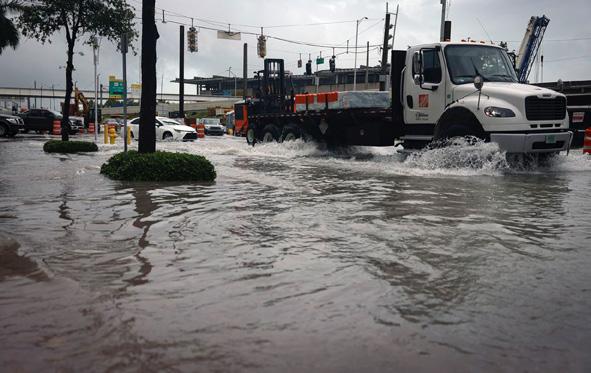

In the event of a major disaster, you and your family should realistically plan to be selfsufficient for at least seven days before outside resources are available. A little preparation now could save lives and prevent injuries in the future.
Preparing for Disaster
The following information will help protect you and your family.
Escape routes. Every room in your house should have two designated escape routes. The whole family needs to know, understand, and practice the escape routes, especially children.
Evacuation plans. Massive evacuations caused by fire, hurricanes, and flooding are becoming more and more common. You may have only minutes to leave. So be ready to move!
■ If you know there might be trouble soon, keep a full tank of gas in your car and only take one car per family to evacuate.
■ Gather disaster supplies and have a batterypowered radio for official evacuation instructions. Don’t forget the extra batteries!
■ Before you leave, lock up your home and unplug everything except the freezer and refrigerator.
■ Let others know where you’re going, leave early to avoid being trapped, and follow recommended evacuation routes. Don’t take shortcuts—they may be blocked!
Family communications. Your family may not be together when a disaster strikes, so plan how you will contact one another in emergency situations. Pick a friend or relative who lives out of state for family members to notify that they are safe.
Utility shutoff. Every adult needs to know how to shut off the utilities: natural gas, water, and electricity. Because different gas meter configurations have different shutoff procedures, contact your gas utility for guidance on preparation and response.
Food. Prepare in advance a week’s worth of nonperishable food supplies for every family member. Try to avoid foods that will make you thirsty. Choose salt-free crackers, wholegrain cereals, and canned foods with high liquid content. Stock canned foods, dry mixes, and other staples that do not require refrigeration, cooking, water, or special preparation. You may already have many of these on hand. Be sure to include foods that meet special dietary needs, and do not forget a manual can opener!
Water. Water can become a precious resource after a disaster. Keep an emergency water supply
ample enough to meet the needs of the entire family for seven days or longer. Also plan on having enough water to meet your family’s personal hygiene and sanitation needs.
Important documents. Store documents, such as insurance policies, deeds, birth certificates, and property records, in a bank safety deposit box away from home. Make copies for your disaster supply kit. Keep a small amount of cash or traveler’s checks where you can quickly get to them.
Special needs. A family member with a disability or a special need may require additional assistance in an emergency. Find out what assistance is available in your community and be sure to inform the local office of emergency services and the fire department about your family’s special needs.
Pets. If you must evacuate, don’t leave your pets behind! They may not survive on their own, and you may not be able to find them when you return. Create a pet-survival kit that includes essential supplies such as food, water, and medications. For more information, contact the Humane Society of the United States as www. humanesociety.org.
Safety skills. Family members should know how to administer first aid and cardiopulmonary resuscitation (CPR). The American Red Cross
42 September 2023 • Florida Water Resources Journal
LET’S TALK SAFETY
This column addresses safety issues of interest to water and wastewater personnel, and will appear monthly in the magazine. The Journal is also interested in receiving any articles on the subject of safety that it can share with readers in the “Spotlight on Safety” column.
Let’s Talk Safety is available from AWWA; visit www.awwa.org or call 800.926.7337. Get 40 percent off the list price or 10 percent off the member price by using promo code SAFETY20. The code is good for the Let’s Talk Safety book, dual disc set, and book + CD set.
frequently provides first-aid and CPR classes. Everyone should also know how to use a fire extinguisher and your home should have an ABC-type extinguisher (one that can be used for paper, liquid, and electrical fires).
Shelter. You may want to consider having sheltering supplies, such as tarps, tents, and sleeping bags ready to go.

Emergency kit for work. This kit should be in one container and ready to grab and go in case you
are evacuated from your workplace. Besides food and water in the kit, have comfortable walking shoes in case an evacuation requires you to walk long distances.

Emergency kit for your car. In case you are stranded, keep a kit of emergency supplies in your car, which should contain food, water, firstaid supplies, flares, jumper cables, and seasonal supplies. Change stored food and water supplies in all of your kits every six months and write the new date on all containers. You’ll also need to
rethink your supply needs every year and update your kit as your family needs change.

Resources
For more information check out the Federal Emergency Management Agency website at www.ready.gov, the American Red Cross website at www.redcross.org, and your community’s emergency service organizations. S
Florida Water Resources Journal • September 2023 43

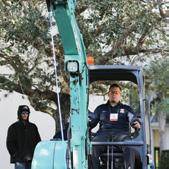


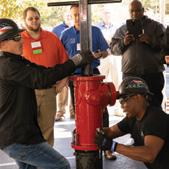







St. Augustine’s Lift Stations Rise Above Stormy Seas
Taylor Bomarito and Stephen Slaughter
The City of St. Augustine (city) owns and operates a wastewater collection system in St. Johns County. The system includes over 84 lift stations and 60 mi of force mains. The city, the oldest continuously occupied settlement in the United States, is prone to flooding from tides, rainfall, and storm events due to low-grade elevations.

When some of the city’s lift stations were damaged after Hurricane Matthew, the city took the opportunity to improve lift station resiliency for future flood events. After the city determined the proper flood elevations for each station and completed construction, the lift stations successfully withstood challenges from two hurricanes, validating the methodology used and providing a roadmap for other utilities facing similar challenges.
Hurricane Matthew and the Aftermath
In October 2016, Hurricane Matthew traveled just off the east coast of Florida near the city as a Category 3 hurricane. Heavy wind and rainfall, along with storm surge, resulted in water levels up to 4 ft above ground surface in the bayfront area and along the San Sebastian River. The substantial storm surge and flooding damaged 13 lift stations within the city’s service area, the locations of which are shown in Figure 1.
The storm damage mainly impacted control panels and submersible pumps, with seawater entering and submerging components and wires in the lower portion of the control panels, including the submersible pump cables. City staff completed emergency repairs to maintain wastewater collection and transmission in the service areas for the affected lift stations.
Taylor Bomarito, P.E., is an associate with Hazen and Sawyer in Jacksonville, and Stephen Slaughter, P.E., is the utilities director at City of St. Augustine.
Following the damage, the city sought to restore functionality of its existing lift stations and increase their resiliency to better-withstand future storms.
After the hurricane, the city applied for Federal Emergency Management Agency (FEMA) funding to assist in rehabilitating, repairing, or replacing the affected lift stations. The city performed an evaluation of its lift station details and specifications with respect to pertinent standards, such as American Society of Civil Engineers (ASCE) 24 – Flood Resistant Design and Construction. The ASCE 24 is deemed by FEMA to meet or exceed the minimum National Flood Insurance Program (NFIP) requirements for buildings and structures.
The ASCE 24 is referenced by the Florida Building Code (FBC), which requires that design and construction of buildings and structures located in flood hazard areas be constructed to withstand those hazards in accordance with ASCE 24.
The city applied for FEMA funding under the public assistance and hazard mitigation categories. Project components associated with restoring lift stations to prehurricane conditions and bringing them up to current codes fell under public assistance; items associated with preventing future flood damage fell under hazard mitigation. The project upgraded the lift stations to comply with city standards, Florida Department of Environmental Protection (FDEP) rules, and ASCE 24.
A summary of the hardening improvements for the 13 lift stations is presented in Table 1. The primary wastewater pumps are a submersibletype mounted in wet wells, which are inherently floodproof except for the electrical connections inside the control panel where the cable ends are exposed. Lift stations were elevated and provided with backup diesel pumps where feasible. In lieu of generators, the preferred method of backup was diesel-engine-driven pumps, which have greater redundancy since they do not rely on the pumps inside the wet well, their control panel, or their electrical power supply. Control panels were moved to raised platforms where feasible. All wet wells
48 September 2023 • Florida Water Resources Journal
FWRJ
Figure 1. Locations of 13 lift stations damaged by Hurricane Matthew flooding. Continued on page 50


September 11-14............ Backflow Tester .................................................................. Deltona .................. 3275/405 14............ Backflow Tester recertification ........................................ Deltona .................. $85/115 18-21............ Wastewater Collection B................................................ Deltona .................. $325 October 2-4............ Backflow Repair ................................................................. Deltona .................. $275/305 4............ Backflow Tester recertification ........................................ Deltona .................. $85/115 16-20 Reclaimed Water Field Site Inspector Deltona $350/380 16-20............ Wastewater Collection C ................................................. Orlando................. $325 16-20............ Wastewater Collection B.................................................. Orlando................. $325
Table 1. Lift Station Floodproofing Methods/Features
a structure is located and the flood design class of a structure. Flood design class is determined by occupancy category, which is based on the importance of a structure in terms of protection of occupants and function.
Flood zones are designated on flood insurance rate maps (FIRMs), published by FEMA, to identify areas at risk for flooding. Flood zones for high-risk areas, where flooding is expected to occur during a base flood event, are generally categorized with letters beginning with either V or A. The V zones are coastal areas where high-velocity wave energy is also expected during a base flood event; zone A areas have a 1 percent annual chance of flooding. Flood zones of X, B, and C indicate minimal to moderate flood risk.
Lift stations are considered flood design class 3, which includes buildings and structures that pose a high risk to the public or significant disruption to the community should they be damaged, be unable to perform their intended functions after flooding, or fail due to flooding. The project’s lift stations are not located in coastal high-hazard areas (i.e., V zones), nor in coastal A zones. In this case ASCE 24 recommends a minimum elevation of the BFE plus 1 ft, or DFE, whichever is higher for utilities, equipment, and materials that could be damaged by flood.
Historically, engineers have used FIRMs to ascertain BFEs for a given area, but they are updated infrequently; St. Johns County’s most recent FIRM revisions were issued in 2004 and 2018. In recent years, there has been more emphasis on specific studies to better-define flood elevations, including county-level studies, transect maps, and results from FEMA’s studies and models.
In 2011 FEMA issued a flood insurance study (FIS) for St. Johns County, based on transect data, which provided 100-year and 500-year flood elevations based on the waterbody. Due to the recurrence of significant flooding events (e.g., Hurricane Matthew and Hurricane Irma in the St. Augustine area), FEMA also performs special studies of flood areas via sophisticated modeling to provide flood data that are more accurate than FIRM maps.
were designed to withstand uplift from flotation during flood conditions to reduce damage during major storm events. Ballasts were utilized and were sized with a safety factor of 1.5 to meet ASCE 24 criteria.
Elevation Information Sources
Resiliency design for the proposed lift stations centered primarily around increasing the elevation of critical elements to protect the lift stations from storm surge and sea level rise (SLR). The raised platforms and wet wells for the lift stations utilized
design criteria based on ASCE 24. For lift stations this relies in part on base flood elevation (BFE), which is a 100-year flood elevation (i.e., 1 percent annual chance of flood); design flood elevation (DFE), which is the elevation corresponding to the area designated on a community’s flood hazard map; and 500-year flood elevation. The typical DFE is based on BFE plus a 1-ft differential; however, several communities require a higher differential depending on the flood zone.
The ASCE 24 specifies elevation and freeboard (i.e., additional height above NFIP’s base flood elevation) as a function of the flood zone where
For a selection of the project’s lift stations, a summary of the 100-year and 500-year flood elevations from various information sources is presented in Tables 2 and 3. It should be noted that the most recent and accurate data do not always provide the highest flood elevation values. In fact, for the project area, the 100-year and 500-year flood elevations have been lowered over time in the information available for St. Johns County. This demonstrates the importance of careful review of available documentation and close coordination with FEMA to obtain the latest and most accurate flood elevation information available. Moreefficient designs and large cost savings are possible
50 September 2023 • Florida Water Resources Journal
Lift Station (LS) No. Control Panel Backup Wet Well Type of Hatch LS 4 Elevated, NEMA* 4X Elevated Diesel Pump Elevated, Replaced Standard LS 5 Elevated, NEMA 4X Elevated Diesel Pump Elevated, Replaced Standard LS 6 Elevated, NEMA 4X Elevated Diesel Pump Elevated, Rehabbed Standard LS 7 Elevated, NEMA 4X Elevated Diesel Pump Elevated, Rehabbed Triplex LS 10 Elevated, NEMA 4X Elevated Diesel Pump At Grade, Rehabbed Triplex LS 11 Elevated, NEMA 4X Elevated Diesel Pump Elevated, Rehabbed Standard LS 12 Elevated, NEMA 4X Elevated Diesel Pump Elevated, Replaced Standard LS 21 Elevated, NEMA 4X None, Pump Out Connection At Grade, Replaced Traffic-Rated LS 22 Elevated, NEMA 4X None, Pump Out Connection At Grade, Rehabbed Traffic-Rated LS 23 At Grade, NEMA 6P None, Pump Out Connection At Grade, Rehabbed Traffic-Rated LS 24 At Grade, NEMA 6P None, Pump Out Connection At Grade, Rehabbed Flood-Tight LS 50 Elevated, NEMA 4X Elevated Diesel Pump At Grade, Replaced Flood-Tight LS 52 Elevated, NEMA 4X Elevated Diesel Pump At Grade, Rehabbed Flood-Tight
Electrical Manufacturers Association
*National
Lift Station LS4 LS5 LS6 LS7 2004 FIRM (NGVD 29) 9 (8 NAVD), Zone AE 9 (8 NAVD), Zone AE 9 (8 NAVD), Zone AE 9 (8 NAVD), Zone AE 2011 FIS St. Johns County (NGVD 29) 8.5 (7.5 NAVD) 8.5 (7.5 NAVD) 8.5 (7.5 NAVD) 8.5 (7.5 NAVD) 2018 FIRM (NAVD 88) N/A Zone X 0.2% 6 Zone AE 6 Zone AE 7 Zone AE Table 2. 100-Year (1 Percent) Flood Elevations, Base Flood Elevation (ft) Lift Station LS4 LS5 LS6 LS7 2011 FIS St. Johns County (NGVD 29) 10.9 (9.9 NAVD) 10.9 (9.9 NAVD) 10.9 (9.9 NAVD) 10.9 (9.9 NAVD) 2020 FEMA Storm Surge Analysis (NAVD 88) 8.1 8 8.1 8.1 Table 3. 500-Year (0.2 Percent) Stillwater Elevation Flood Elevations (ft) Continued from page 48 Continued on page 52
Electrical Manufacturers Association
*
National

if the latest data show that lower flood elevations are expected than older information might indicate.
It’s also important to note the elevation data used within each information source to allow for accurate comparisons. Commonly used data are the National Geodetic Vertical Datum (NGVD), established in 1929, and the North American Vertical Datum (NAVD), established in 1988. The NGVD was the primary data in use until most entities adopted the newer NAVD data in the 1990s and early 2000s. Conversion between the two data is location-dependent, though in Florida the differences in data range from approximately 0.0 ft (near Pensacola) to 1.6 ft (near the Florida Keys).
The city has a data conversion of 1 ft (i.e., NGVD 29 – 1 ft = NAVD 88).
Selection of Elevations
The data sources discussed previously were considered for the selection of proposed elevations. Table 4 presents the key elevations data for four of the project’s lift stations.
For most of the project’s lift stations, the basis for setting the minimum design platform elevation for each station began with the BFE plus 1 ft or DFE (whichever was higher) in accordance with ASCE 24 for flood design class 3 structures. The BFEs were ultimately ascertained from the most recent FIRM
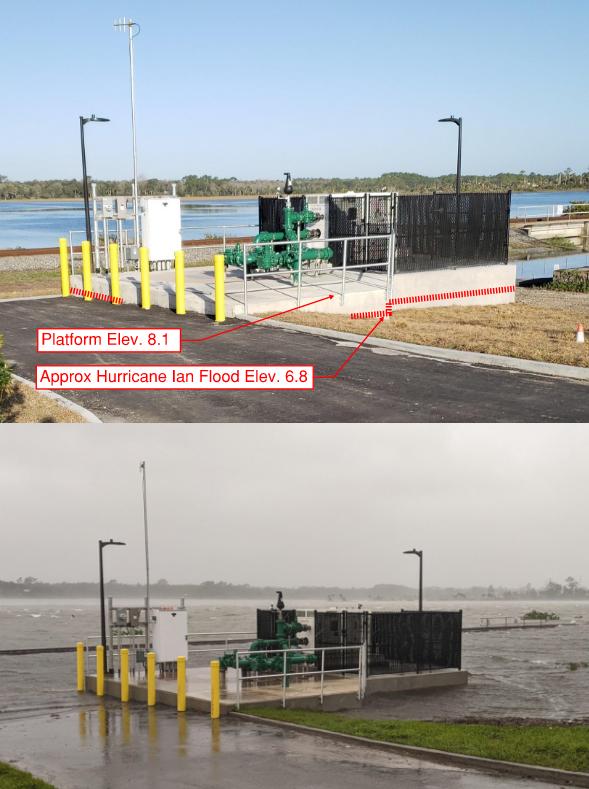
maps, though the county FIS and historical FIRM maps were considered, as presented in Table 2.
The city had the additional goal of ensuring proposed lift station elevations met or exceeded the 500-year SWELs. The 500-year SWELs, corresponding to the 0.2 percent annual chance flood, were originally obtained manually from FEMA maps and tables based on available transect data in the 2011 FIS of St. Johns County. This study provided SWEL data for various design storms based on water body alone and not location. Lift stations 4, 5, 6, and 7 are all located along the San Sebastian River, a tributary of the Matanzas River. As such, these four lift stations had equal values in the FIS for the design storms, as presented in Tables 2 and 3.
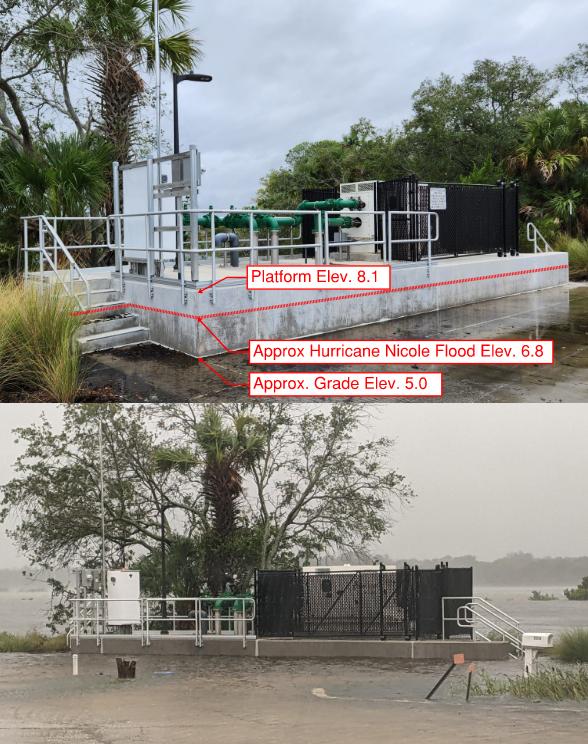
Coordination with Florida’s emergency management division revealed that higheraccuracy data were available and FEMA was able to provide refined 500-year SWEL elevations that were specific to each lift station location. The elevations were provided via output from FEMA’s surface model for the area. The 500-year SWELs were generally used to set the platform elevations.
A final review of the proposed platform elevations involved comparison of the proposed elevations with the estimated flood elevations experienced during Hurricane Matthew. This was done to ensure that the criteria developed were sufficient to exceed the flooding that initially
52 September 2023 • Florida Water Resources Journal
Lift Station LS4 LS5 LS6 LS7 Original Wet Well Top Elevation 6.58 5.08 5.45 5.43 Base Flood Elevation (BFE)* N/A 6 6 7 ASCE 24 Table 2-1, Flood Design Class 3 (BFE +1) 7 7 7 8 500-Year Stillwater Elevation (SWEL)† 8.1 8 8.1 8.1 Estimated Hurricane Matthew Flood Elevation 6+ 6+ 7 6.9 Design Wet Well Top Elevation 8.1 8.1 8.1 9.1 Design Bottom of Control Panel Elevation 9.1 9.1 9.1 10.1 Design Diesel Pump Equipment Pad Elevation 8.6 8.6 8.6 9.6 *BFE values from 2018 FIRM. LS4 utilized an estimated BFE of 6 based on proximity to
Table 4. Key Elevation Data for Rehabilitated Lift Stations (ft NAVD 88)
Figure 3. Lift station 6 improvements and hurricane validation.
50
Figure 2. Lift station 5 improvements and hurricane validation.
Continued from page
To further increase resiliency, the city considered placing critical components of the lift stations higher than platform elevations to account for SLR. The diesel pump equipment pads were generally set at 0.5 ft above the platform elevations, with the pumps on a belly fuel tank providing for even higher pump components. In addition, the control panel bottoms were elevated 1 ft or more above the design platform elevations. An additional 1 ft for SLR, above the ASCE 24 recommendation, was roughly equivalent to the 500-year SWEL; however, since an additional ft above the platform was provided to the bottom of the control panels, the 1-ft allowance for SLR was also provided above the 500-year SWEL for the most critical components.
A 1-ft allowance for SLR is roughly equivalent to the National Oceanic and Atmospheric Administration (NOAA) 2017 intermediate low SLR projection for 2070 based on Jacksonville’s Mayport Station. This correlates to the proposed 50-year design life of the lift stations. The SLR projections differ by region, so careful review of local information is important when SLR design criteria are included with a project.
Hurricanes Ian and Nicole
Construction for rehabilitation and repair of the 13 lift stations began in March 2021 and was completed in March 2023. The city experienced severe flooding during Hurricanes Ian and Hurricane Nicole in 2022. Since construction of many of the project’s lift stations had been completed, both hurricanes provided the city with unique opportunities to assess the performance of the lift stations and the resiliency criteria utilized.
Figures 2, 3, and 4 present photographs of several of the project’s lift stations after completion of the resiliency project and during recent severe flooding from these hurricanes. Maximum flood elevations for these two hurricanes were generally 6 to 7.5 ft.

Conclusions
The upgraded lift stations successfully withstood flooding from storm surge coupled with tidal effects from Hurricanes Ian and Nicole in 2022. The city was able to maintain sewer service and mitigate sanitary sewer overflows in its system. Design criteria used for these lift stations were validated by station performance during significant storm events.
Recommendations
For areas subject to flooding and storm surge, it’s important to carefully review guidance documents and standards (e.g., ASCE 24) in selection of design criteria for resiliency. Flood
zone and flood design class can be determined using FIRMs and ASCE 24, respectively.
The BFE (100-year), DFE, and 500-year SWEL flood elevations can be determined based on the information sources available for a community (e.g, FIRMs, FIS, FEMA modeling, etc.). While many information sources exist, it’s important to utilize the latest and most accurate information. Close communication with FEMA will allow engineers to ascertain the latest BFE and SWEL information available, which does not always equate to higher flood elevations. Using the most accurate data will allow for the most cost-effective design to be developed that still meets desired floodproofing criteria for a facility.
Community-specific SLR projections can also be determined via federal sources, such as NOAA or the U.S. Army Corps of Engineers, or via sources adopted by the community. A project’s budget can be weighed versus conservatism in elevation selection to produce optimal criteria selection.
Acknowledgments
The authors would like to express their sincere appreciation to the City of St. Augustine public works department and utilities department management and staff, including Reuben C. Franklin, Jr., assistant city manager; Todd Grant, public works director; Wade Giddens, utility field operations manager; Danny Hodges, former supervisor of wastewater collection systems; and Randy C. Port, line foreman—wastewater collection systems, for their vision, guidance, and support
during this lift stations project. Thanks also go to Wharton-Smith Inc., the construction manager at risk, including Mike Alexakis, area manager, central and north Florida; Nathan Hillard, director of collaborative delivery—water; William Marshall, senior preconstruction services manager; Mike Higginbotham, project manager; Shawn Halloran, superintendent; and Felipe Saer, project engineer, for their skills and efforts implementing this lift stations project.
References
• Adapting to Rising Tides – Coastal Resilience in St. Augustine: Baseline of Our Past, Beacon for Our Future. The University of Florida Resilient Communities Initiative, April 2016.
• Flood Insurance Study, St. Johns County, Florida and Incorporated Areas. Federal Emergency Management Agency, July 18, 2011.
• American Society of Civil Engineers 24-14 Flood Resistant Design and Construction. ASCE, 2014.
• ASCE 24: Improving the Performance of Buildings and Structures in Flood Hazard Areas, Ingargiola et al. ATC and SEI Conference on Advances in Hurricane Engineering 2012.
• Coastal Hazards and Flood Mapping: A Visual Guide. Federal Emergency Management Agency, January 2021. S
Florida Water Resources Journal • September 2023 53
Figure 4. Lift station 7 improvements and hurricane validation.
When Experience Matters
WATER TECHNOLOGIES


ACTIFLO® is a proven drinking water clarification technology in Florida, treating over 200 MGD of surface water in Melbourne, Tampa, and Okeechobee. The ACTIFLO® system has a 25 year performance history of effectively removing turbidity, organics, algae, cryptosporidium, and giradia from surface waters.
Additionally, ACTIFLO® is an established solution in wastewater treatment, treating wet weather flows; providing primary and secondary clarification for TSS and BOD removal; and tertiary clarification for removing phosphorus.





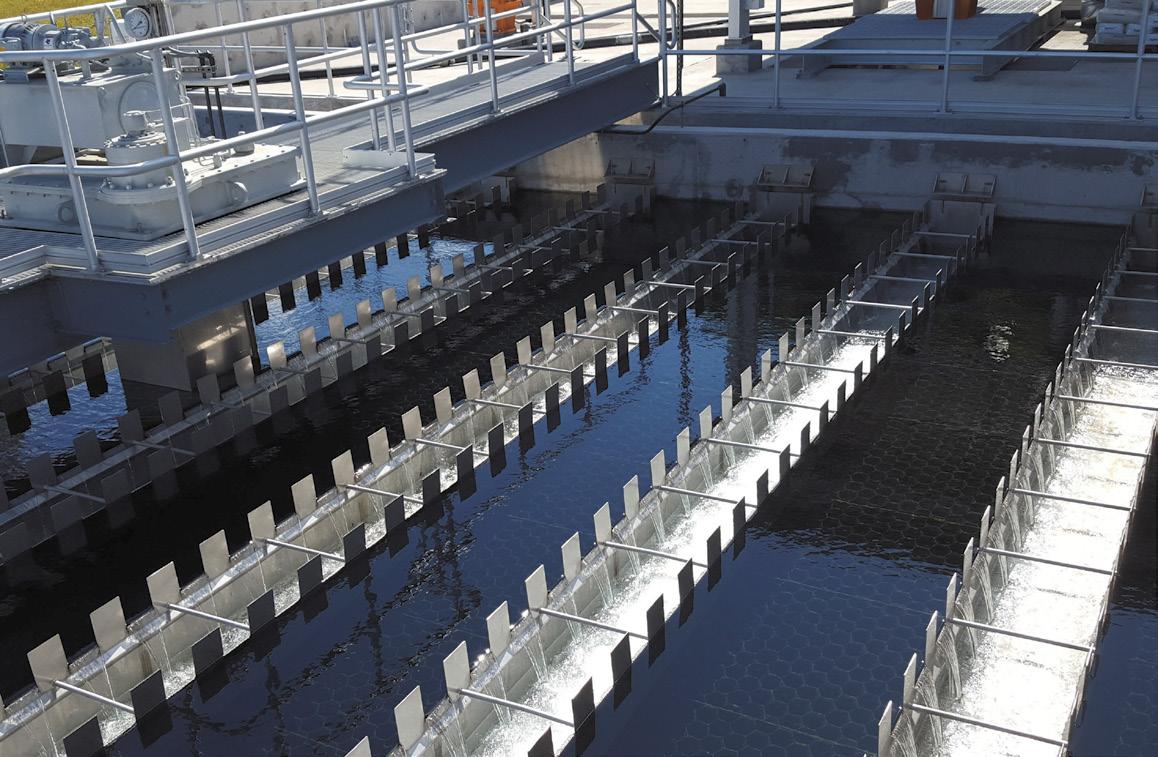
Testing & Local Site Visits Available
Pilot
usmunicipal@veolia.com www.veoliawatertech.com
ACTIFLO® is exclusively represented in Florida by MTS Environmental. Visit us at mts-florida.com Robert Bierhorst, Jr. Wesley Chapel, FL 813-760-5508 Eric Peters, P.E. Lakewood Ranch, FL
Wade Wood, P.E.
941-773-5051
Tampa, FL 321-299-2395
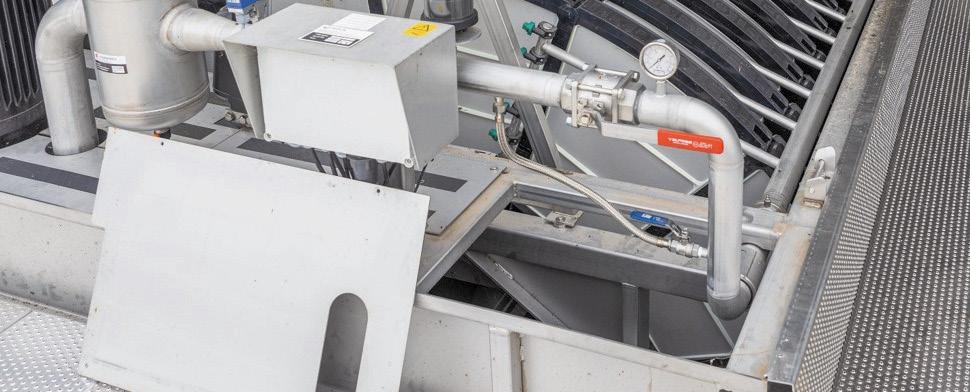
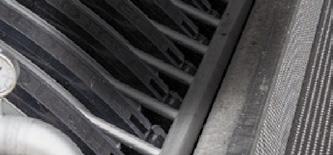





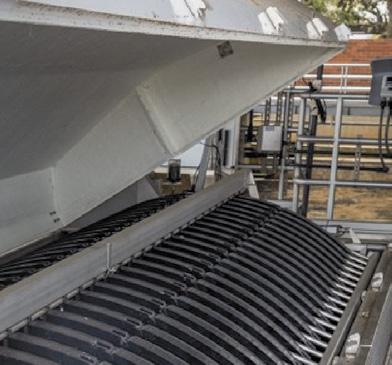
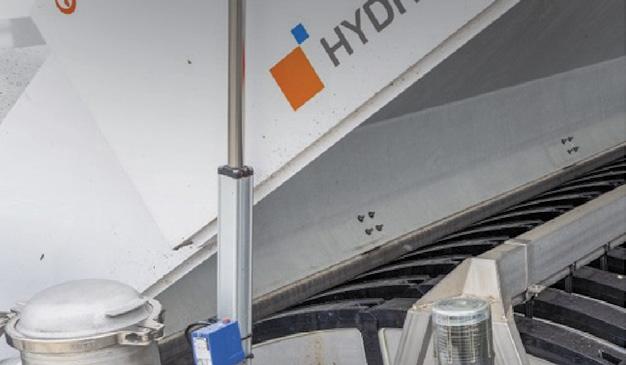



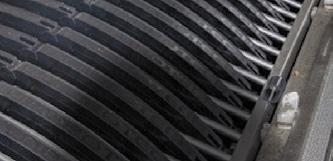



WATER TECHNOLOGIES Available Veolia’s Hydrotech Discfilter is a filtration solution that contributes to the global Ecological Transformation, reducing backwash waste, reducing phosphorous discharge, and minimizing land footprint. The Hydrotech Discfilter can be utilized in the following applications. With over 600 Hydrotech Discfilter units installed in the United States, pilot testing and site visits are available in your area. usmunicipal@veolia.com www.veoliawatertech.com CSO SSO Pre-treatment Water Reuse Phosphorus Removal Primary Treatment Hydrotech Discfilter is exclusively represented in Florida by MTS Environmental. Visit us at mts-florida.com Robert Bierhorst, Jr. Wesley Chapel, FL 813-760-5508 Eric Peters P.E. Lakewood Ranch, FL 941-773-5051 Wade Wood P.E. Tampa, FL 321-299-2395 Pilot Testing Ailbl Energy Efficient Filtration with a Small Footprint
Magic Mixed Liquor: Part I
Patrick “Murf” Murphy President, FWPCOA
es, Ken Enlow, I’m finally writing an article about wastewater! I’m almost at the end of my second term as president (with only five more columns to go) and I’ve put off writing about what is the most fun and challenging discipline (maybe some bias there), but I’m a firm believer in the magic of mixed liquor suspended solids.
The magic isn’t over; we just need some engineers and scientist to find the next steps, as the bugs can do more than you think they can.
In the Beginning
There is some conflicting information from reference material about the exact dates of when and how activated sludge came to be. As certain things are discovered (sometimes accidentally), such as Coca-Cola, X-rays, penicillin, microwaves, Super Glue, Vaseline, etc., one thing leads to another, and historically, the creation of activated sludge plants should be a close runnerup to these momentous occasions.
The activated sludge process was discovered in 1913 by two British researchers, Edward Arden and W.T. Lockett. They were doing research for the Manchester Corp. Rivers Department at Davyhulme Sewage Works, and an engineering colleague of theirs, Gilbert Fowler, had observed experiments being conducted at the Lawrence Experiment Station in Massachusetts being done by H.W. Clark and S. De M. Gage.
Clark and Gage found that if you aerated sewage, a reduction of Total Kjeldahl nitrogen (TKN) and a clarified sewage could be achieved. So, a very simple experiment of aerating a bottle
of sewage that had been coated with algae led to Arden and Lockett experimenting with treating sewage in a draw-and-fill reactor. It was sort of like a small scale of what would be known now as a sequencing batch reactor.
They were able to achieve complete nitrification after a month of aeration and believed that the sludge had been activated (sort of like activated carbon); hence the name “activated sludge.” A year later, they added the concept of recycling sludge, patented the process, and published a paper in 1914 first using the term.
My guess is that the term “mixed liquor” was created during a gathering celebrating their paper at the nearest pub over a few Black and Tans and boilermakers, and realizing that what they had done with return activated sludge (RAS), recycled back around mixing with the influent sewage, was a perfect cocktail!
After Their Paper
Two years later, in 1916, the first fullscale continuous-flow system was installed at Worcester (a cathedral city in the Worcester District), in Worcestershire, England. World War I happened, lasting to 1918, but the new treatment method spread rapidly afterward to the United States, Denmark, Germany, and Canada. The activated sludge treatment process became a well-known biological wastewater treatment process in the countries where sewer systems and sewage treatment plants were common.
Ten large plants were built in the U.S. between 1916 and 1927. The first activated sludge plant was built in San Marcos, Texas, in 1916. I love trickling filters and the first trickling filter was operated in Madison, Wis., in 1901. That the facility that I went to work for in 1989 was still using two 140-foot-diameter trickling filters for the secondary biological treatment is just fascinating to me. Obviously, the lower cost of operating a trickling filter trumped the percentage
of removal in less-populated and money-strapped areas, so it was the next best thing after outhouses, pit privies, sewage farming, and the ever-popular septic tanks. The awareness and control of sewage discharges on receiving waters and public health really started to take hold.
By the way, the first federal regulation of sewage, the Rivers and Harbors Appropriations Act, which prohibited the discharge of solids to navigational waters without a permit, came from the U.S. Army Corps of Engineers in 1899.
In 1944, Earle B. Phelps wrote the book, Stream Sanitation. He had worked with H.W. Streeter, a sanitary engineer with the Public Health Service, on the characterization of oxygen depletion in a stream receiving organic wastes. This led to the Streeter-Phelps Equation, which was the first quantitative model used to determine the impact of biochemical oxygen demand (BOD) discharges to surface water bodies. Their equation led to deterministic modeling that made it possible to limit specific discharges from wastewater treatment plants. (Thanks to Greg Chomic for sharing a couple of pictures of the book that are at the end of this column.)

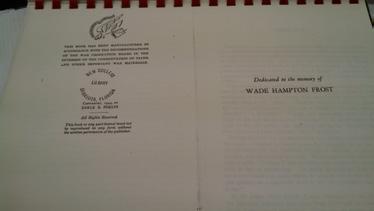
Now, this part is very exciting. After Phelps graduated from the Massachusetts Institute of Technology in 1899 with a bachelor of science degree in chemistry, where do you think he worked until 1903? He worked at the Experiment Station in Lawrence, Mass. (mentioned in the second paragraph), as an assistant bacteriologist!
Just a plug for University of Florida fans here: Phelps also worked there from 1944 until his death in 1953 as a professor of sanitary science.
It’s fascinating to me, because every year I fight for the Florida Water Environment Association (FWEA) Earle B. Phelps Award firstplace and traveling trophies for the best treated effluent in the state from an advanced wastewater treatment (AWT) plant.

I’m sure to miss some important regulatory items here, but significant steps were made (seems like things are happening even faster now) in making sure things were done as best as possible.
In 1948, the Federal Water Pollution Control Act was the first major law enacted by Congress to address problems of water pollution in the U.S. It was primarily for provisions of federal funds for water quality surveys and construction of collection and treatment plants. It wasn’t well designed to prohibit pollution, giving only limited authority to the federal government and providing an extremely cumbersome enforcement mechanism.
56 September 2023 • Florida Water Resources Journal
C FACTOR
Inside covers of Stream Sanitation by Earle B. Phelps, copyright 1944, from the Sarasota Library. (provided by Greg Chomic)
In 1966, the Clean Water Restoration Act extended federal grants to plant construction.
In 1972, the Clean Water Act (CWA) was the primary federal law in the U.S. governing water pollution. The objective of the Federal Water Pollution Control Act (commonly referred to now as CWA) is to restore and maintain the chemical, physical, and biological integrity of the nation’s waters by preventing point and nonpoint pollution sources, providing assistance to publicly owned treatment works for the improvement of wastewater treatment, and maintaining the integrity of wetlands.
Amended in 1977, CWA mandated water quality standards for receiving waters based on the following:
S Designated use and human health and aquatic life criteria



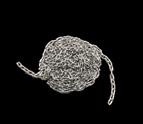
S Development of strategies and a control plan if not meeting water quality standards to improve impaired waters using the total maximum daily load approach
S Use of the National Pollutant Discharge Elimination System program for point sources for control of toxics, industrial pretreatment, and biosolids disposal

The U.S. Environmental Protection Agency, through Section 404, was also mandated to develop an effective program for controlling the pollution of the nation’s 76 million acres of wetlands, and other items.
So, I want to skip ahead a little here, to something a lil’ closer to home and to the heart: AWT standards. State Sens. Harold Wilson and Mary Grizzle cosponsored a bill in 1972, the Wilson-Grizzle Act, which played an important role in developing the reclaimed water system and is generally accredited for the clean-up of Tampa Bay that targeted a “zerodischarge system.” Mary Grizzle, who was the first Republican woman elected to the Florida Legislature, later worked with Mary Figg, serving in the Florida House of Representatives, and the Grizzle-Figg Bill was born, replacing the Wilson-Grizzle Act in 1987.
This new bill revised the state definition of AWT and would stand until today as the highest level of treatment and the ultimate goal for wastewater plants with the intent of a “recovered water product that contains not more than 5 mg/L of carbonaceous biochemical oxygen demand (CBOD5), 5 mg/L of total suspended solids, 3 mg/L of nitrogen, and 1 mg/L of phosphorus.” All wastewater treatment plants discharging to Tampa Bay had to achieve these limits on or before Oct. 1, 1990.


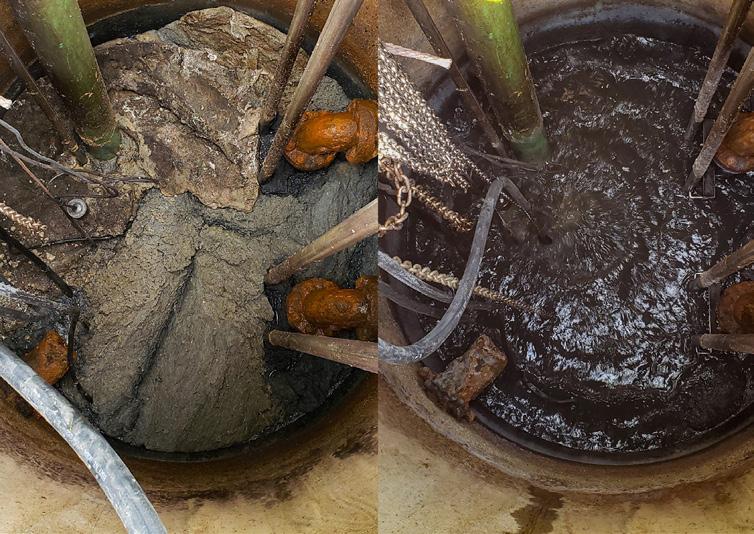
Every time I do a discharge monitoring report for our AWT plant, I chuckle to myself about Jeff Greenwell (longtime regulator with the Florida Department of Environmental
Protection), who I have the greatest respect for, once called it the “Mary-Squared Bill,” and at the time I had no clue what he was referring to. I knew what the Grizzle-Figg Bill was and what it meant for our treatment, but I was so glad that I didn’t let embarrassment of not knowing something stop me from asking him what he was talking about, then taking a deeper dive into the “two Marys.”
Part II Coming Soon
I know, at this point you might be saying, “Murf, where is the magic?” Well, I’m slightly over the deadline for this column, but I’ll be back.
Thank you to all the hard-working people in our industry. Let’s keep that water clean and work safe! S

Florida Water Resources Journal • September 2023 57
Pump station wet wells need mixing and the GridBee® AP500 is the best there is. Turn crappy into happy. • Mix away FOG. Stop pump clogs. • Extremely affordable price point • No moving parts in the water • Everything you need in one kit • Quick and easy to deploy A proven solution with thousands of installations! www.ixomwatercare.com | +1 866 - 437 - 8076 | watercare@ixom.com All Weather, Quiet Air Unit Heavy-Duty Air Hose Chain AP500 Mixer Watch the Video Before and After Ask us about our 30-Day Free Trial Become an AP500 Distributor partner Contact us today!
JEA and Resource Innovations have launched a first-of-its-kind fleet electrification program aimed at assisting fleet utility customers in their transition from conventional internal combustion engine vehicles to electric vehicles.
“This collaboration brings together our strengths and resources, enabling us to provide cutting-edge solutions and comprehensive support to fleet owners as they transition to electric vehicles,” said Dave McKee, JEA electrification program manager.
This turnkey program provides all JEA commercial and industrial customers with fleet vehicles, regardless of size or type, which will provide or assist customers with the development of a comprehensive fleet conversion plan (FCP) and aid customers who move forward with the implementation of fleet electrification. As a testament to its commitment, JEA’s own fleet is leading by example and will be the first to finalize its fleet conversion plan.
As EV demand grows, there is an increased need for intelligent electrification solutions and collaboration between
businesses and their utilities. This initiative will assist businesses and fleets in developing comprehensive fleet conversion plans for adopting EVs, while driving responsible kilowatt load growth and ensuring a utility’s proactive involvement in the process.




By engaging with JEA, fleets with onroad vehicles, such as transit vans, school buses, pickups, passenger vehicles, and more, gain access to invaluable expertise and resources, ensuring efficient infrastructure deployment. This collaborative approach facilitates timely implementation, enabling fleets to swiftly realize the benefits of EV adoption.
Customers can expect a range of benefits, including a total cost of ownership tool hosted on JEA’s website with access to an expert to help customers utilize the tool and plan their conversion. Furthermore, a range of services, such as fleet assessments, assistance with EV procurement and charging infrastructure, and financial incentives, are available.
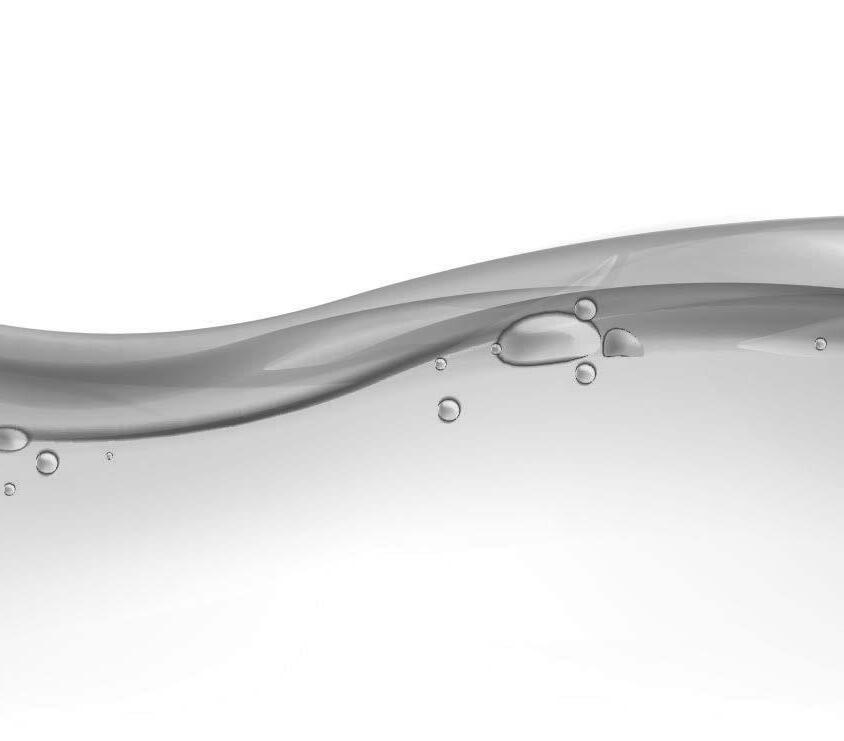
Apart from its existing programs, JEA also provides a drive electric residential program, which has a history of offering EV rebate and incentive programs and assists


residential customers in making informed decisions about purchasing an EV.

From a another perspective, JEA extends rebates to commercial customers who purchase or lease electric equipment for nonroad purposes, school or transit buses, and EV charging equipment.
“We are thrilled to collaborate with JEA on its fleet electrification program,” said Kelly Helfrich, vice president of transportation electrification at Resource Innovations. “By combining our expertise and resources, we will empower utility customers to transition their fleets to electric, whether they’re a small fleet of pizza delivery vehicles, or a large fleet with a mix of light- to heavy-duty vehicles. This program ensures the utility is brought in early on in fleet electrification planning efforts, which will lead to a more optimized transportation system.” S

58 September 2023 • Florida Water Resources Journal
NEWS BEAT Factory Trained Technicians - Emergency Repair Services - PM Service/Plans Gas Feed Systems Dry Chemical Feed Systems Peristaltic Pumps Fiberglass Enclosures Metering Pump Skids Tablet Feeders Analyzers Scale Systems Serving the Southeast since 1976 800–826-7699 watertc@watertc.com watertc.com
Operators: Take the CEU Challenge!
Members of the Florida Water and Pollution Control Operators Association (FWPCOA) may earn continuing education units through the CEU Challenge! Answer the questions published on this page, based on the technical articles in this month’s issue. Circle the letter of each correct answer. There is only one correct answer to each question! Answer 80 percent of the questions on any article correctly to earn 0.1 CEU for your license. Retests are available. This month’s editorial theme is Emerging Issues and Water Resources Management. Look above each set of questions to see if it is for water operators (DW), distribution system operators (DS), or wastewater operators (WW). Mail the completed page (or a photocopy) to: Florida Environmental Professionals Training, P.O. Box 33119, Palm Beach Gardens, Fla. 33420-3119. Enclose $15 for each set of questions you choose to answer (make checks payable to FWPCOA). You MUST be an FWPCOA member before you can submit your answers!
EARN CEUS BY ANSWERING QUESTIONS FROM PREVIOUS JOURNAL ISSUES! Contact FWPCOA at membership@fwpcoa.org or at 561-840-0340. Articles from past issues can be viewed on the Journal website, www.fwrj.com.
Florida’s Water Resources: A Primer
Tara Wade and Tatiana Borisova (Article 1: CEU = 0.1 DS/DW02015423)
1. Monthly climatic water budgets indicate that in ___________, water deficiencies rarely occur.
a. Key West
b. the Panhandle
c. Orlando
d. south Florida
2. Florida receives a statewide average of ______ inches of rain per year.
a. 31
b. 55
c. 11
d. 60
3. _____________ underlies several feet of sediment, including thick beds of relatively impermeable material that restrict upward movement of water.
a. First magnitude springs
b. The Biscayne aquifer
c. The Floridan aquifer
d. The boulder zone
4. Of Florida’s five largest rivers, only the _______________ River is entirely within Florida’s borders.
a. St. Johns
b. Escambia
c. North New
d. Suwannee
5. A confined aquifer that holds water under sufficient pressure to allow water to rise above a confining layer through a tightly cased well is identified as
a. attenuated.
b. unconsolidated.
c. artesian.
d. net positive head.
Alternative Management Strategies to Prevent Per- and Polyfluoroalkyl Substances From Entering Water Supplies
Laura Rodriguez, Kyle Thompson, and Eva Steinle-Darling (Article 2: CEU = 0.1 DS/DW02015424)
1. Of the five wastewater utilities surveyed, all had influent per- and polyfluoroalkyl substances (PFAS) concentrations exceeding _______ ng/L.
a. 150 b. 200
c. 250 d. 300
2. The granular activated carbon (GAC) PFAS removal study revealed that ___________ was ineffective, indicating a 100 percent breakthrough at a 10-minute empty bed contact time.
a. bituminous coal
b. pulverized media
c. granular biochar
d. mixed media beds
3. A 2020 Water Research Foundation (WRF) study of 38 diverse water reclamation facilities revealed an average effluent perfluorosulfonic acid (PFOS) concentration of ________ng/L
a. 3.6 b. 4.8
c. 8 d. 73
4. The sewershed analysis showed that certain ____________ source categories accounted for the plurality of specific PFAS or groups.
a. groundwater b. surface water
c. point source d. nonpoint source
5. The U.S. Environmental Protection Agency (EPA) has proposed a legally enforceable drinking water maximum contaminant level (MCL) for PFAS and PFOS of ____ ng/L.
a. 2 b. 4
c. 10 d. 70
If paying by credit card, fax to (561) 625-4858
providing the following information:
St. Augustine’s Lift Stations
Rise
Above Stormy Seas
Taylor Bomarito and Stephen Slaughter (Article 3: CEU = 0.1 WW02015425)
1. Where lift station platforms could not be raised, lift station infrastructure was hardened by
a. decreasing wet well ballast.
b. increasing wet well diameter.
c. constructing a surrounding cofferdam.
d. installing National Electrical Manufacturers Association (NEMA) 6P control panels.
2. By allowing an additional 1 foot of elevation for critical lift station components, the utility has incorporated consideration of
a. the year 2070 intermediate low sea level rise projection.
b. impacts related to category 3 hurricane winds.
c. maintenance ergonomics.
d. long-distance alarm light visibility.
3. The main lift station impacts associated with Hurricane Matthew’s high water levels were the result of
a. wet well buoyancy.
b. saltwater destruction of submersible pumps.
c. submergence of lower control panel sections.
d. short circuiting of lift station electrical service lines.
4. Lift stations are considered flood design class
a. 1.
b. 2.
c. 3.
d. 4.
5. An advantage of backup diesel-driven lift station pumps over generators is that such pumps
a. are less costly to purchase.
b. are less costly to operate.
c. can operate longer without refueling.
d. do not rely on the functionality of other station components.
Florida Water Resources Journal • September 2023 59
___________________________________ SUBSCRIBER NAME (please print) Article 1 LICENSE NUMBER for Which CEUs Should Be Awarded Article 2 LICENSE NUMBER for Which CEUs Should Be Awarded Article
LICENSE NUMBER for Which CEUs Should Be Awarded
3
(Credit Card Number) (Expiration Date)
C L A S S I F I E D S
CLASSIFIED ADVERTISING RATES - Classified ads are $22 per line for a 60 character line (including spaces and punctuation), $60 minimum. The price includes publication in both the magazine and our Web site. Short positions wanted ads are run one time for no charge and are subject to editing. ads@fwrj.com
POSITIONS AVAILABLE
City of Temple Terrace
Water Plant Operator
Technical work in the operation of a water treatment plant and auxiliary facilities on an assigned shift. Performs quality control lab tests and other analyses, monthly regulatory reports, and minor adjustments and repairs to plant equipment. Applicant must have State of Florida D.E.P. Class “A”, “B”, or “C ” Drinking Water License at time of application. Excellent benefits package. To apply and/or obtain more details contact City of Temple Terrace, Chief Plant Operator at (813) 506-6593 or Human Resources at (813) 506-6430 or visit www.templeterrace.com. EOE/DFWP.
SALARY RANGES:
$22.13 - $35.42 per hour • w/”C” Certificate
$24.34 - $38.96 per hour • w/”B” Certificate (+10% above “C”)
$26.77 - $42.86 per hour • w/”A” Certificate (+10% above “B”)
$1,000 Hiring Bonus!
WASTEWATER TREATMENT OPERATOR FULL-TIME
The Ocean Reef Community Association (ORCA), located in North Key Largo, FL, has a Full-Time position available for a Wastewater Treatment Operator. The Wastewater Treatment Operator is responsible for recording and interpreting data to generate reports of the plant.
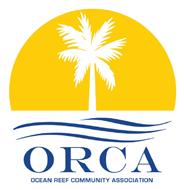
Selected candidate assist with the operation of a secondary level 350,000 gal/day wastewater treatment plant, wastewater collection system, and a reverse osmosis water treatment plant and ancillary facilities. In addition, selected candidate will collect samples and perform routine laboratory analyses. Selected candidate must respond to emergency call outs during weekends, holidays, and non-business hours to ensure continued operation of public facilities.
High School Diploma or equivalent is required. Community College and/or Correspondence courses in utility infrastructure are desirable. A valid Florida Driver License is required. A Florida Class C Wastewater Treatment Plant Operator License is required. One (1) to three (3) years of experience is preferred.
Please visit orcareef.com to view the full job description/requirements and apply online.
Human Resources
OCEAN REEF COMMUNITY ASSOCIATION orcaemployment@orcareef.com
Peace River Manasota
Regional Water Supply Authority
Water Treatment Plant Operators C, B or A. Apply at www.regionalwater.org/careers.
The Coral Springs Improvement District – A GREAT place to further your career and enhance your life!
CSID offers…
• Salary levels are at the top of the industry
• Health Insurance that is unmatched when compared to like sized Districts
• Promotions from within for qualified employees
• Continuing education courses to develop your skills and further your growth
• Retirement plans where an employee can earn 18% of their salary by contributing only 6% toward their future
Multiple positions:
The Coral Springs Improvement District is seeking qualified employees in the following fields:
Water Plant Operator
Applicants must have a valid Class C or higher Drinking water license and experience in Reverse Osmosis/Nano Filtration treatment processes preferred however not required. Position requirements include knowledge of methods, tools and materials used in the controlling, servicing, and minor repairs of all related R.O. water treatment facilities machinery and equipment.
Salary range for C license or greater - $54,059. - $86,112. Salary to commensurate relative to level of license and experience in this field. Trainees who have passed the state exam and only need actual hours worked to obtain the license may be considered.
Water and Wastewater Plant Maintenance Mechanic Performs maintenance and repairs to plant facilities including but not limited to pumps, engines, motors, chemical feeders, filters, bar screens, valves, pipes, HVAC equipment found in water/wastewater treatment plants.
Responsible for the repair and upkeep of the District’s facilities. Must be a good problem solver and decision maker.
Education and experience require a high school diploma or GED equivalent. Must have knowledge and level of competency commonly associated with the completion of specialized training in the field of work.
Salary range for this position: $54,662.40 - $72,300.80. Salary to commensurate relative to level of experience.
Benefits:
Excellent benefits which include health, life, disability, dental, vison and a retirement plan which includes a 6% non-contributory defined benefit and matching 457b plan with a 100% match up to 6%. EOE.
All positions require a valid Florida Drivers license, high school diploma or GED equivalent and must pass a pre-employment drug screen test.
Please send resume to jzilmer@csidfl.org or fax resume to 954-7536328, attention Jan Zilmer, Director of Human Resources.
60 September 2023 • Florida Water Resources Journal
Water Reclamation Facility Operator III
This is skilled technical work, with supervisory responsibilities, in the inspection and operation of a water reclamation plant. The person in this position fills the role as the shift leader. Work involves responsibility for the safe and efficient operation of a water reclamation facility, routine adjustments to equipment and machinery operating controls, inspection of equipment inside and outside the plant site. An employee in this class exercises considerable independent judgment in adjusting machinery, equipment, and related control apparatus in accordance with established procedures and standards to produce a high-quality reclaimed water product. An employee in this class must be able to report to work outside of normally scheduled work hours at the discretion of management.
Required Qualifications:
♦ Possess a valid high school diploma or GED equivalency.
♦ Possess and maintain a valid Driver License.
♦ Possess and maintain a State of Florida Wastewater Operator “B” License.
♦ Must be able to perform shift work.
♦ Acknowledge this position is designated as Emergency Critical (EC) and if hired into the position, you must be immediately available to the department before, during, and after a declared emergency and/or disaster.
Salary: $29.97 - $39.90 hourly
http://www.stpete.org/jobs
City of Lakeland, Wastewater Plant Operator II
This is skilled work in the operation of Wastewater Treatment Plant equipment and processes. Work involves responsibility for the care and efficient operation of the wastewater treatment plant during an assigned shift. Work includes covering a working area which contains several operating units of the wastewater treatment system.
Applicant must have a High School Diploma, 2,080 working hours of wastewater plant operation experience and a Florida Class “C” Wastewater Plant Certification or higher.
To apply and/or obtain more details, visit https://www.governmentjobs.com/careers/lakelandfl
Martin County BOCC

Multiple Positions Available
Treatment Plant Wastewater Operators (Licensed)
Senior Project Leader
Heavy Equipment Operators
Industrial Electrician
Apply Online - www.martin.fl.us
www.martin.fl.us
Village of Tequesta - FOREMAN Water Distribution Unit
Utilities Department
The Village is currently searching for a hand on, highly responsible individual who will carry out specialized work in the operations, maintenance and repair of utility systems; leading and scheduling the daily work of crew members. This position often works adjacent to, and in the same capacity as those supervised.
More information:
https://tequesta.bamboohr.com/careers/126
The Department of Environmental & Engineering Services (DEES) is currently accepting job applications at: https://www.margatefl.com/207/Job-Opportunities
Clay County Utility Authority - Multiple Positions Available

• Senior Design Engineer /project manager,
• Water, Wastewater Maintenance Mechanic Apply at WWW.Clayutility.org
Water Distribution Manager
$76,650 - $118,639/yr.
Utilities Program Coordinator
$60,057 - $92,955/yr.
Utilities Electrician
$59,451 - $83,564
Utilities Compliance Coordinator
$54,473 - $84,315/yr.
Utilities Treatment Plant Operator I or Trainee
$53,924 - $75,875/yr. or $48,910 - $68,821/yr.
Utilities Mechanical Specialist
$46,581 - $65,544/yr.
Utilities System Trainee or Operators II & III
$40,239, $44,362 - $62,424, $48,910 - $68,821/yr. Apply Online At: http://pompanobeachfl.gov Open until filled.

Florida Water Resources Journal • September 2023 61
Editorial Calendar
January ....... Wastewater Treatment
February ...... Water Supply; Alternative Sources
March ........... �Energy Efficiency; Environmental Stewardship
April ............. Conservation and Reuse
May .............. Operations and Utilities Management
June Biosolids Management and Bioenergy Production
July .............. Stormwater Management; Emerging Technologies
August ......... Disinfection; Water Quality
September... Emerging Issues; Water Resources Management
October ....... New Facilities, Expansions, and Upgrades
November.... Water Treatment
December .... Distribution and Collection
Technical articles are usually scheduled several months in advance and are due 60 days before the issue month (for example, January 1 for the March issue).
The closing date for display ad and directory card reservations, notices, announcements, upcoming events, and everything else including classified ads, is 30 days before the issue month (for example, September 1 for the October issue).
For further information on submittal requirements, guidelines for writers, advertising rates and conditions, and ad dimensions, as well as the most recent notices, announcements, and classified advertisements, go to www.fwrj.com or call 352-241-6006.
Display Advertiser Index
Test Yourself Answer Key
Continued from page 41
1. A) Slow sand filtration
The city of Altona, Germany, in 1892, escaped a cholera epidemic by using slow sand filtration.
2. B) 1800.
Filtering surface water through designed systems and distributing it on a municipal scale began in England and Scotland around 1800.
3. C) 100 times lower
Typical loading rates of slow sand filtration are 100 times lower than that of rapid filtration.
4. A) Backwash stage
The stage whereby the filtration capacity of a filter is restored and particles are removed from the filter is called the backwash stage.
5. C) France
In 1750 the patenting and commercialization of filtration technologies began in France.
6. A) wool.
Around 1750, in France, various filter media were used, such as sponges, charcoal, sand, and wool.
7. D) James Simpson.
The first modern slow sand filter was designed for the Chelsea Water Works Co. in London in 1829 by James Simpson.
8. B) 1852.
The first regulation mandating filtration of the river water supplied by the Metropolitan District of London was passed in 1852.
9. A) rapid filtration.
The type of filtration when water is pretreated with coagulants, flows downward by gravity through a filter bed that is 2 to 6 ft deep, and particles are collected throughout the bed is called rapid filtration.
10. B) 1885.
The first municipal plant to use rapid filtration was in Somerville, N.J., in 1885.
62 September 2023 • Florida Water Resources Journal Blue Planet Environmental Systems 63 CEU Challenge 59 Data Flow .................................................................................................... 29 Engineered Pump LLC 13 FJ Nugent 31 Florida Aquastore 35 Florida Water Resources Conference 39 FSAWWA 2023 Fall Conference ........................................................... 44-47 FWPCOA Training Calendar 49 Gerber Pumps 9 Heyward 2 Hudson Pump & Equipment 51 Hydro International ...................................................................................... 5 IXOM Watercare 57 Lakeside Equipment Corporation 7 McKim & Creed 25 Poly Processing 43 Smith & Loveless 27 US Submergent 33 Veolia 54-55 Water Treatment & Controls Technology 58 Xylem........................................................................................................... 64
Januar y 2016 Januar y 2016 SERVING FLORIDA’S WATER AND WASTEWATER INDUSTRY SINCE 1949
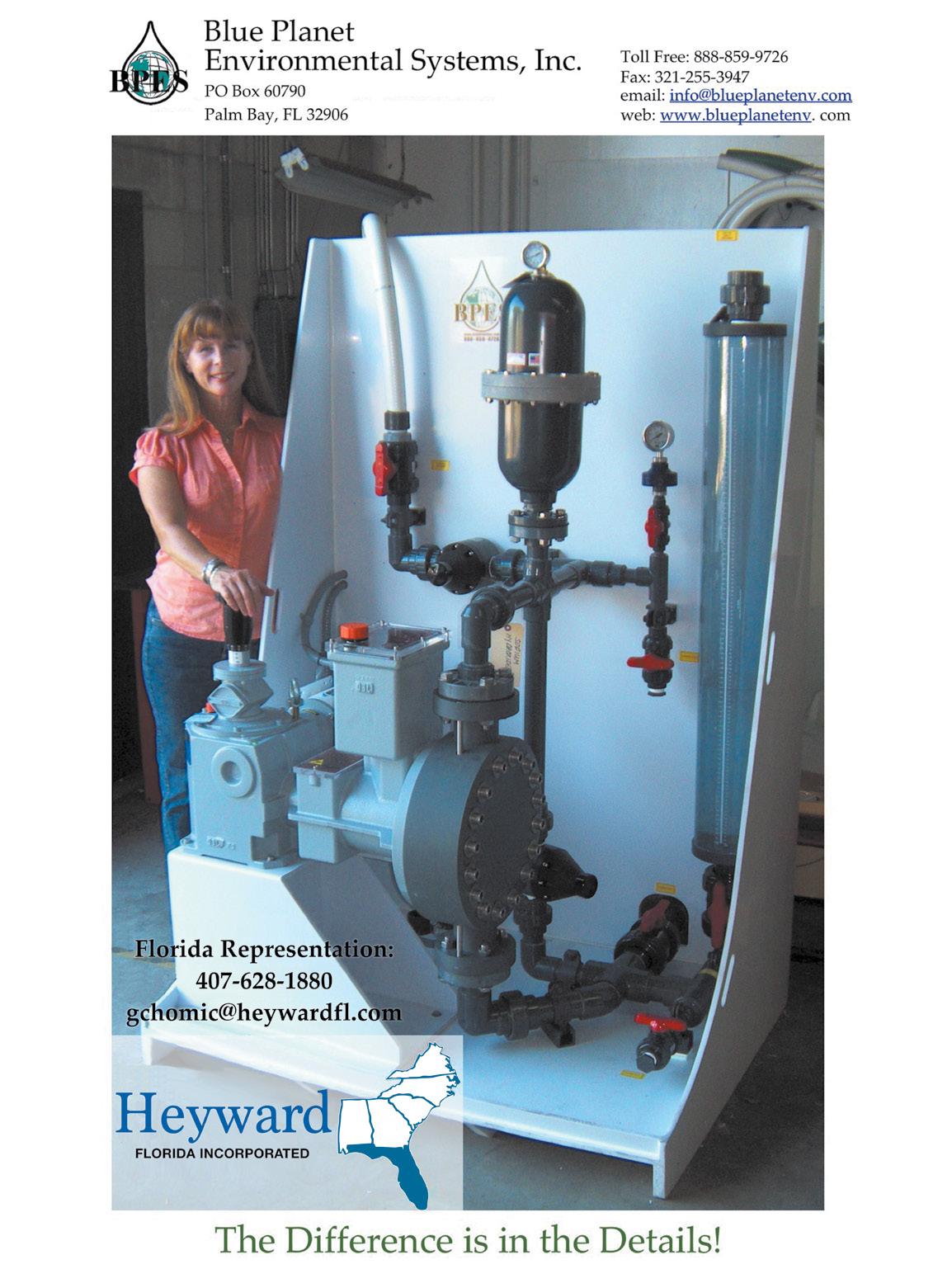

WORLD’S FIRST WASTEWATER PUMPING SYSTEM WITH INTEGRATED INTELLIGENCE This revolutionary system delivers optimal performance while reducing your total cost of ownership. I t also offers unparalleled flexibility and simplicity on a whole new level. You might even say it thinks for itself. We invite you to enter a new era in wastewater pumping with Flygt Concertor. One powerful solution. Unlimited possibilities. For more information contact your local Xylem product sales professional. Xylem Products 455 Harvest Time Dr. Sanford, FL 32771 407-880-2900 www.flygt.com INTEGRATED INTELLIGENCE CONCERTOR™ NEW PUMPING SYSTEM WITH




















































































































































































































